"Advertisement"

Essay On Unsung Heroes Of Freedom Struggle In English 500+ Words
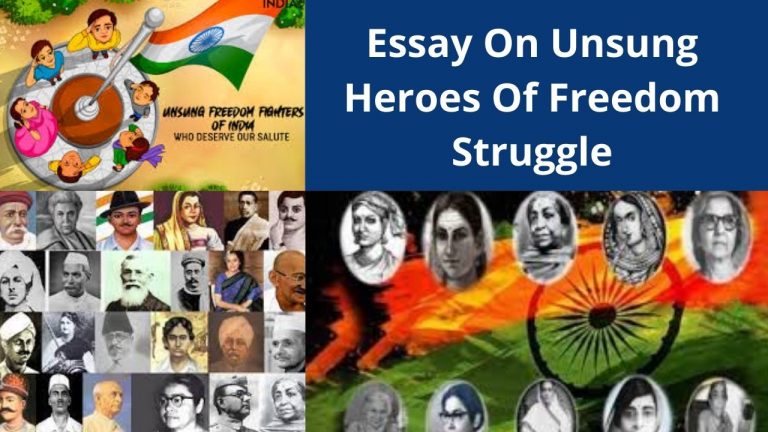
Hello Friend, In this post “ Essay On Unsung Heroes Of Freedom Struggle In English “, We will read about the Unsung Heroes Of Freedom Struggle as an Essay in detail. So…
Let’s Start…
Essay On Unsung Heroes Of Freedom Struggle In English
“ Let’s salute the unsung heroes who give us beautiful today.”
“Freedom fighters gave us their today for our golden tomorrow.”
Introduction:
The freedom of a country depends on its citizens. Every country has a few brave hearts who willingly give up their lives for their countrymen.
Freedom fighters play a very important role in making any country independent. India is a land of endless freedom fighters.
Many are known and many are unsung. All of them have their way to fight for freedom like some have chosen the path of Non-violence. While some show their bravery with pistols in their hands and swords.
Our Independence was hard fought the British ruled over our leads for a long time. But then, there are heroes, aren’t there? There are always heroes.
The ones who stand up and fight. some get the spotlight while the same stay in the dark and contribute just as much as others.
The bodies are true for India’s freedom fighters as well. For those who fought equally hard but never got any share of the limelight, because they simply never cared.
There are so many freedom fighters of India who contributed to the Independence movement but their names faded into the darkness.
Our country, India was colonized by the British. Our freedom fighters fought against the British for our independence.
Some Important freedom fighters of India are Mahatma Gandhi, Bhagat Singh, Lal Bahadur Shastri, Jawaharlal Nehru, and many more.
But there are many freedom fighters who we probably haven’t heard. Most of them sacrificed their lives in getting independence for India. we call them the “Unsung Heroes of India”.
Their only focus was seeing an independent India. But as citizens of this country, we should know about some of them.
Here are some freedom fighters you probably haven’t heard of. These unsung heroes are also the reason we live in a free country.
We must honor their sacrifices and aim to live together in harmony and peace ensuring social justice. In the freedom struggle, India has many unsung heroes, who devoted his life.
Unsung Heroes Of Freedom Struggle Postcard Writing In English
My Vision For India In 2047 Postcard Writing In English
Essay On Unsung Heroes Of Freedom Struggle In Hindi
They were Matangini Hazra, Hazrat Mahal, Senapati Bapat, Aruna Asaf Ali, Bhikaji Cama, Tara rani, Peer Ali Khan, Kamala Devi, Garimella, Tiruppur Kumaran, Birsa Munda, Durgabai etc.
Let’s read in detail about Unsung Heroes of Freedom Struggle .
Matangini Hazra : Hazra was part of the Quit India movement and Non-co-operation movement during one procession, she continued to advance With the Indian flag even after even being short trice. she kept shouting “Vande Mataram”.
Peer Ali Khan : He was one of the initial rebels of India. he was part of the 1857 freedom struggle and among the 14 people who were given capital punishment due to their role in the freedom movement . Even still, his work inspired many who followed but generations later, his name just faded away.
Garimella Satyanarayana : He was an inspiration for the people of Andhra, As a writer, he used his skill to write influential poems and songs to motivate the people of Andhra to join the movement against the British.
Begum Hazrat Mahal : She was a vital part of the 1857 Indian Rebellion. After her husband was exiled, she took charge of Awadh and even seized control of Lucknow during the rebellion. Later, Begam Hazrat had to retreat to Nepal, where she died.
Conclusion:
This August 15, India will celebrate 74 years of Independence from the British Raj and also remember the 200- year old struggle for freedom of our countrymen.
The most famous freedom fighters are undoubtedly Mahatma Gandhi , Netaji Subhas Chandra Bose, Bhagat Singh, Mangal Pandey, and so on, but there are also others who contributed to the independence movement but their names faded into the darkness.
There were many freedom fighters who looked into the eye of the tyrannical British rulers and dared to raise the slogan of an independent India.
Some are celebrated all across the world among the Indian community while there is, remain anonymous to the masses today.
Thanks For Reading “ Essay On Unsung Heroes Of Freedom Struggle In English 500+ Words “.
If you have any questions regarding “ Essay On Unsung Heroes Of Freedom Struggle In English “, So, please comment below.
Essay On My Vision For India In 2047 In 500+ Words
Leave a Comment Cancel reply
Save my name, email, and website in this browser for the next time I comment.
- SOCIAL MEDIA
The Best of Humanity: Celebrating Positive Contributions by Unsung Heroes
Find below some sample stories celebrating unsung heroes working to effect positive change in their homes, community, or in the world.
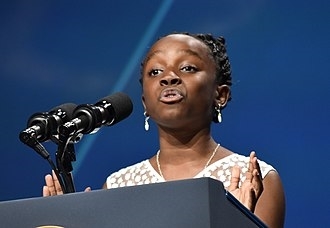
Mikaila Ulmer: The Young Bee Ambassador
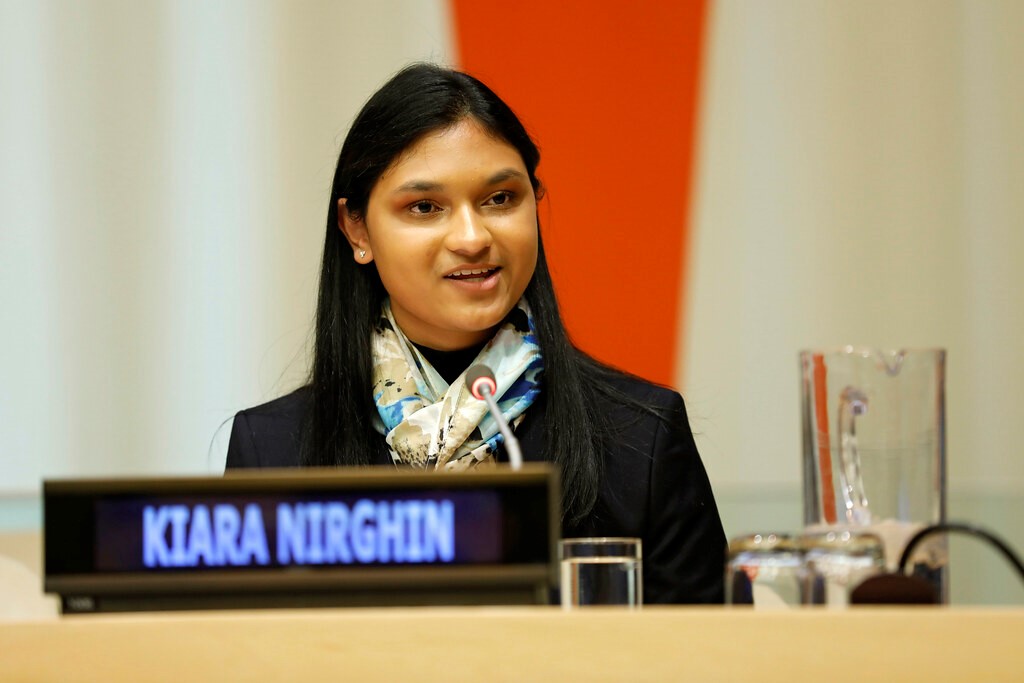
Kiara Nirghin: Young and Innovative
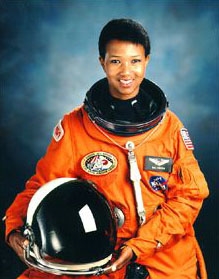
Mae Jemison
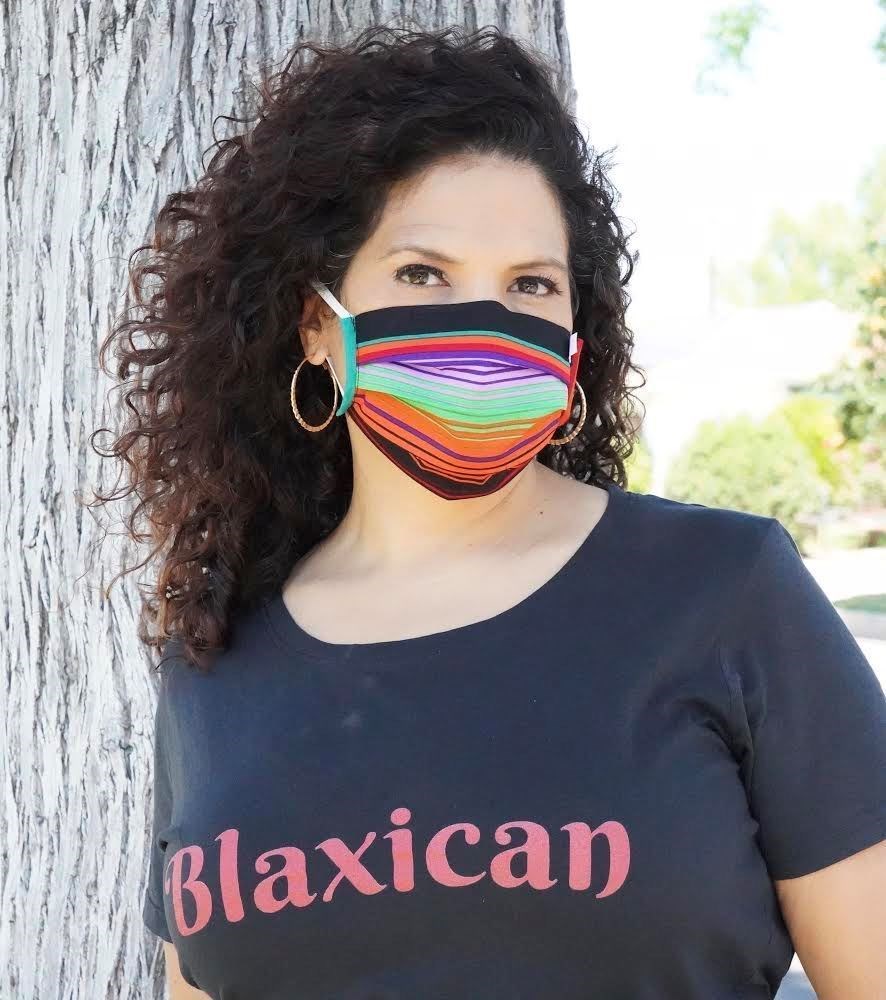
Sonia Smith-Kang: Mixed Up Clothing
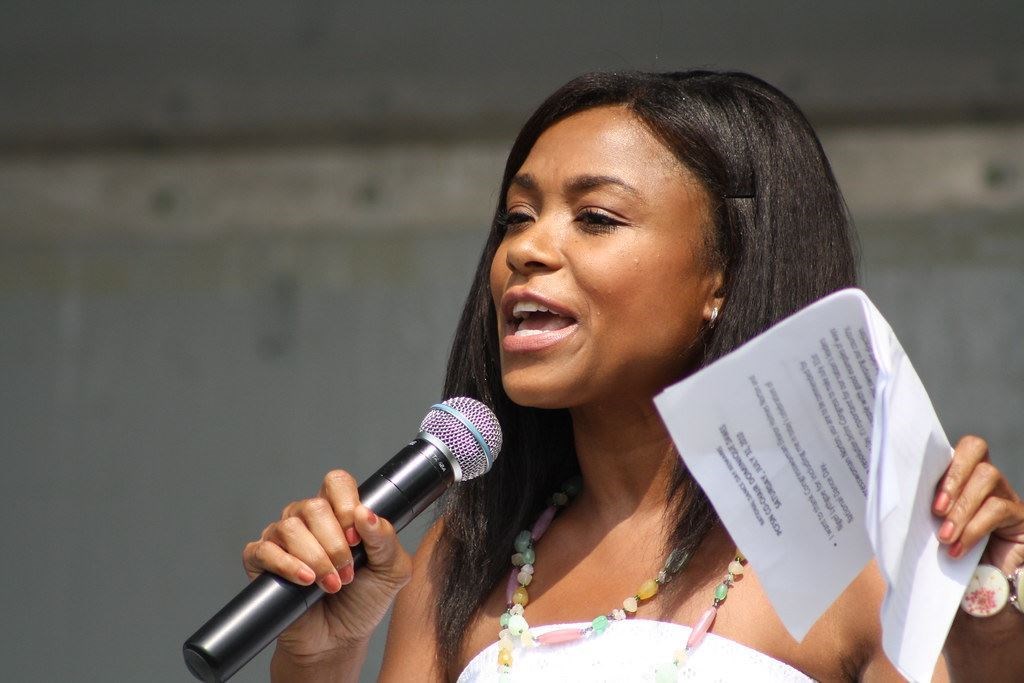
Dominique Dawes
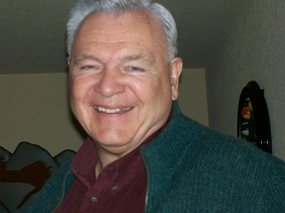
Harry N. Frenchak
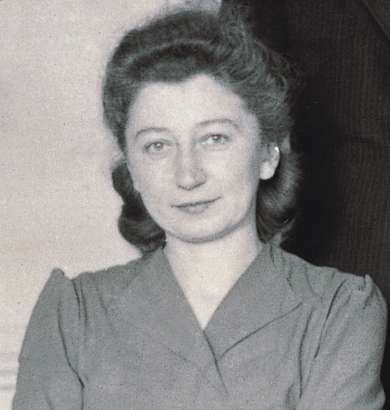
Jackie Robinson
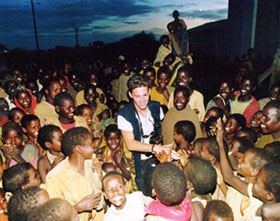
Kitty Richardson

Demi Lovato
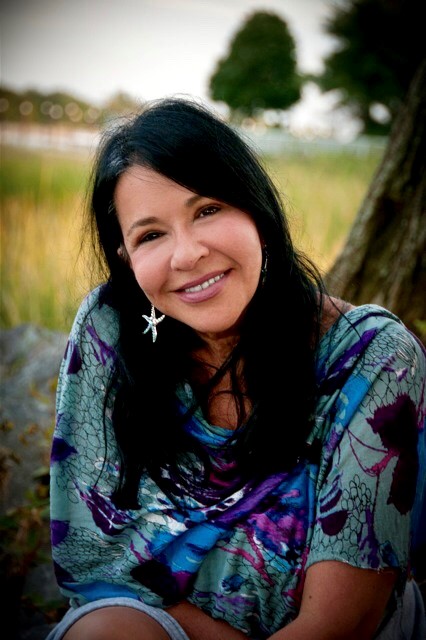
Elissa Montanti: Spreading Global Compassion
Middle school essays.
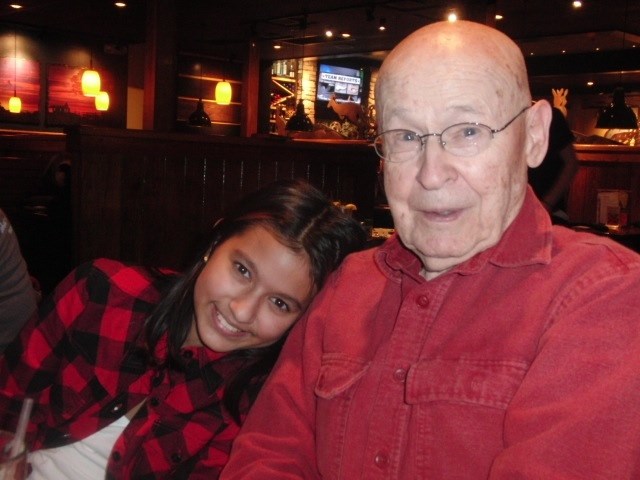
Paco, My Dyslexic Hero
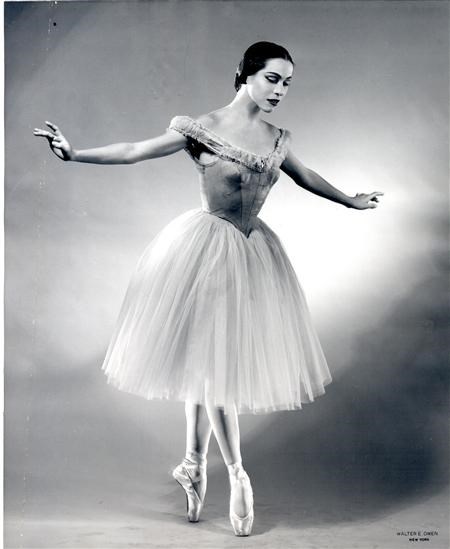
Maria Tallchief
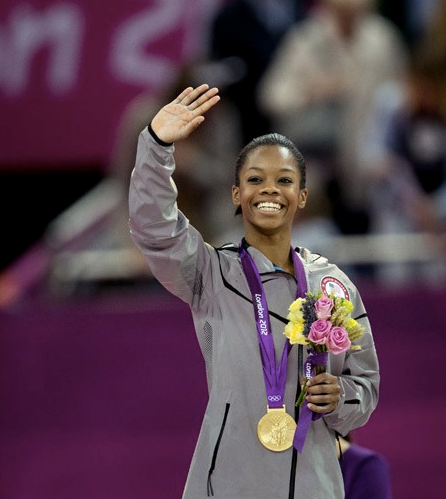
Gabby Douglas
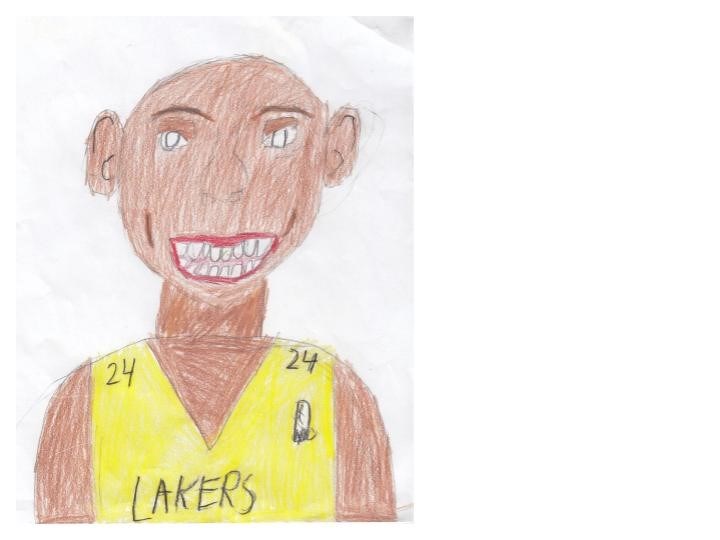
Kobe Bryant
To find some writing and interviewing tips click here., to submit your essay click on the image below: .
Organizer created on 8/22/2023 9:15:28 AM by Abigail Richardson
Last edited 8/22/2023 1:53:10 PM by Abigail Richardson

Self Study Mantra
- Essay for IBPS PO Mains
- Essay for State PSC
- Essay for Banking Exam
- Important Essays
- Letter Writing
- हिन्दी निबंध
- One Word Substitution
- Computer Knowledge
- Important Days
- जीवन परिचय
- Government Schemes List
Unsung Heroes of Freedom Struggle Essay and Paragraph
Unsung heroes of freedom struggle essay and paragraph.
India is celebrating Azadi Ka Amrit Mahotsav to commemorate its 75 years of progressive independent. It’s long drawn struggle to free India from the foreign rule has been a saga of valour. Many people sacrifice their lives for freedom of India. It was not merely for political rights, but for freedom from oppression of the foreign rule in all walks of life.
Many people from every nook and corner of the country indulged themselves in freedom struggle. The supreme sacrifice and selfless spirit of these freedom fighters craved the way for Independent India. But unfortunately, in the recorded history of freedom struggle, a large number of freedom fighters contributions are missing. The history of India’s true freedom struggle is incomplete without these unsung heroes. These unsung heroes should also be recognized by the people for their contribution in making India free and Independent nation.
To recognize the contributions and paying tributes to these great sons and daughters of our country who sacrifice their life for freedom of India, now India is celebrating Azadi Ka Amrit Mahotsav . A series of programmes are being organised on the theme AKAM and Unsung Heroes of India's Freedom Struggle to give due respect and recognition to unsung freedom fighters of India.
Remembering the unsung heroes of freedom struggle, Government of India also started infographic series. Every month many unsung heroes are remembered and people made aware through this infographic series. Awareness campaign through different mediums including social media are also used to make people informed about these unsung heroes of India’s freedom struggle. This is our tribute to these freedom fighters who sacrifice their lives for making India an Independent Nation.
Download 50 PDF Essay from here
Unsung Heroes of Freedom Struggle
Ram Saran Das, Lala: Ram Saran Das was convicted in the first Lahore Conspiracy case in the year 1915. After his release, he became active in the Hindustan Socialist Republican Association and was again convicted.
Also Read: Essay on Har Ghar Tiranga , Essay on Agnipath Scheme
Sukhdev Raj: Sukhdev Raj was born in Lahore on 7th December 1907. He joined the revolutionary movement to make India an Independent nation with the influence of Bhagwati Charan Vohra. When Chandra Shekhar Azad was martyred in Allahabad on 27 February 1931, Sukhdev Raj was with Chandrashekhar Azad. At that time Azad forced him to flee from there. He was jailed for six years in two terms after that he came under the influence of Vinoba Bhave and started serving the leprosy patients in Durg. Here he passed away on 5 July 1973.
Sushila Didi: Sushila Didi was born on 5 March 1905 in Punjab. She joined Hindustan Socialist Republican Association under the influence of Bhagwati Charan Vohra and helped the revolutionaries in various ways. She helped Bhagat Singh by providing shelter after the assassination of Saunders in December 1928 in Calcutta. After independence, she was also President of the Delhi Congress. Sushila Didi passed away on 13 January 1963.
Also Read: Essay on Azadi Ka Amrit Mahotsav
Tapeshwar Pandey: Tapeshwar Pandey was a resident of village Atthar, Shahabad district, Bihar. He participated in the Quit India movement. On 19 August 1942, when the British troops encircled the militant village and opened fire, Tapeshwar Pandey was shot dead on the spot.
Acharya Harihara: Acharya Harihara was born in 1879 at Sriramchandrapur village Sakhigopal in Puri District Odisha. He completed primary studies in the village then admitted in the Puri District School. He along with Gopabandhu Choudhury participated in Salt Satyagraha 1930 to break the salt law. He was arrested along with all other satyagrahis and jailed for six months at Hazaribag jail in Bihar. During the Quit India Movement in 1942 he along with other satyagrahis were arrested because of their active participation. After India’s independence Acharya Harihara continued to work for the welfare of the people and passed away on 29th February 1971.
Also Read: Essay on Natural Farming
Jaggi Devi: Jaggi Devi was popularly known as 'Mata'. She was born in 1917 in a peasant family. She played a leading role in the peasant movement in Avadh. She led the women of Kisanin Sabhas into Satyagraha and fought against the inhuman practice of eviction of the wife and children of dead tenants from their land. She actively participated in Quit India movement. Jaggi Devi's fight for freedom went beyond 1947 and meant not only political swaraj but also economic swaraj which would transform the exploitative land relations.
Rajendra Nath Lahiri: Rajendra Nath Lahiri was the mastermind behind Kakori conspiracy and Dakshineshwar bombing. He was revolutionary member of Hindustan Republican Association aiming at ousting the British from India. He was a Banaras Hindu University student when the revolutionary activities started in Uttar Pradesh and he joined the Hindustan Republican Association along with many other Bengali friends. Among the Kakori martyrs, he was hanged on 17 December 1927 two days before when Ashfaqullah Khan, Ram Prasad Bismil and Roshan Singh hanged on 19 December, 1927.
Also Read: Essay on Human Rights
Celebrating Azadi Ka Amrit Mahotsav and paying tribute to unsung heroes of freedom struggle more than 800 freedom have been recognised till now. You can read more about them at https://cmsadmin.amritmahotsav.nic.in/unsung-heroes.htm
Also Read:
- Essay on Electric Vehicle
- Essay on Cryptocurrency
- Essay on Azadi Ka Amrit Mahotsav
- Essay on Aatma Nirbhar Bharat
You may like these posts
Post a comment.
Thank you for this essay
Its really helpful for me thank you so much

my great grandfather was awarded with the Tamr Patra for his services to community. But do not know how to get details of his work. There would be some record with the govt.

- Download PDF Essay for All Exams
Download PDF Essay for All Exams Most important essays ranging from 250 words to 1000 …
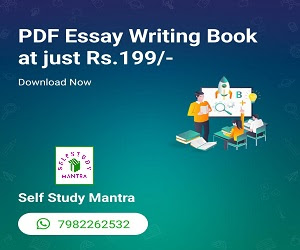
Popular this Month

Trending Essay Topics | Important Essay Topics for Competitive Exams

20 Most Important Essay Topics for CAPF 2024 | UPSC CAPF Essay Topics 2024

My School Essay in English 10 Lines, Essay on My School

My Family Essay in English 10 Lines, Essay on My Family

20 Most Important Letter Writing Topics for Competitive Exams

20 Most Important Formal Letter Topics for Class 10 | Formal Letter Topics for Class 10

Important Days in 2024 | Important National and International Days | Important Days and Dates

Essay on One Nation One Election for Competitive Exams

20 Most expected essay topics for IBPS PO Mains Exam | Important Essay Topics for IBPS PO Mains Exam | Essay for IBPS PO Mains
One word substitution (download here👇👇).
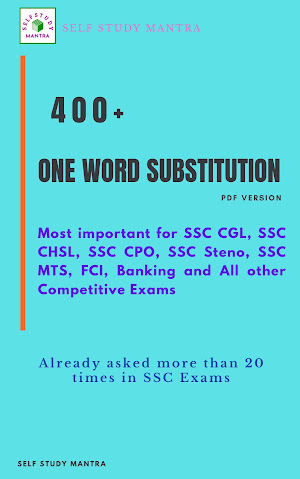
Essay Writing in English

Important Topics
- Essay in English
- Essay in Hindi
- 20 Essays for IBPS PO Descriptive Paper
- Trending Essay Topics
- IBPS PO Previous Year Descriptive Paper
- Important Essays for UPSC
- Essay Topics for UPSC CAPF AC Exam
- How To Crack SSC CGL In First Attempt?
- 100 Most Important One Word Substitution
- Essay on Artificial Intelligence
- Latest Jobs | Admit Card | Result
- Essay on Global Warming
- पर्यावरण प्रदूषण: नियंत्रण के उपाय
- Essay on Women Empowerment
- Daily Homework for Class 1 to 5
Blog Archive
Quick links.
- Paragraph in English
- Advertise With Us
- Career with Us
- Privacy Policy
- Disclaimer, Terms and Condition
- Shipping and Delivery Policy
- Cancellation and Refund Policy
- Products and Pricing
- 10 Lines 13
- Best Books for SSC CGL 2
- Biography 6
- Education System 6
- English Grammar 1
- Essay in Hindi 18
- Essay Topics 32
- essay writing 152
- Farmer Welfare Schemes 1
- Important National and International Days 34
- Mathematics 5
- One Word Substitution 2
- Online Classes 3
- Paragraph Writing 19
- Political Science 1
- Pollution 7
- Republic Day 1
- Speech in Hindi 1
- SSC Exams 5
- Study Tips 7
- जीवन परिचय 6

Azadi Ka Amrit Mahotsav Essay in English

Essay on Advantages and Disadvantages of Online Classes
Copyright (c) 2019-24 Self Study Mantra All Rights Reseved
- All Teaching Materials
- New Lessons
- Popular Lessons
- This Day In People’s History
- If We Knew Our History Series
- New from Rethinking Schools
- Workshops and Conferences
- Teach Reconstruction
- Teach Climate Justice
- Teaching for Black Lives
- Teach Truth
- Teaching Rosa Parks
- Abolish Columbus Day
- Project Highlights
Unsung Heroes: Encouraging Students to Appreciate Those Who Fought for Social Justice
Teaching Activity. Essay by Howard Zinn and lesson by Bill Bigelow. Rethinking Schools. 17 pages. Students research and share stories about unsung heroes in U.S. history.
- Click to email a link to a friend (Opens in new window)
- Click to share on Pinterest (Opens in new window)
- Click to share on Twitter (Opens in new window)
- Click to share on Facebook (Opens in new window)
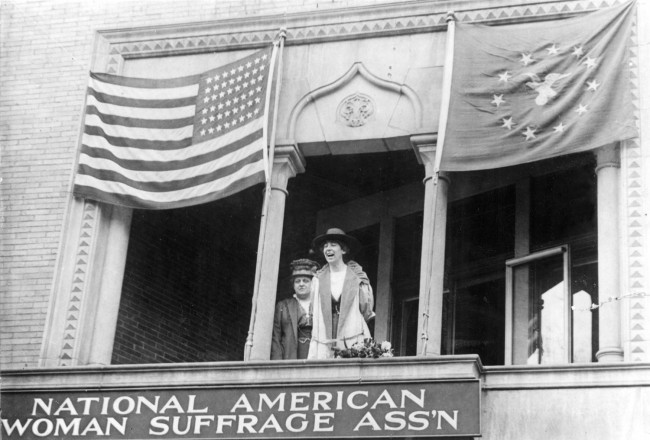
You can no more win a war, than you can win an earthquake.” —Jeannette Rankin
Schools help teach students who “we” are. And as Howard Zinn points out in his essay “Unsung Heroes,” too often the curricular “we” are the great slaveholders, plunderers, imperialists, and captains of industry of yesteryear.
Thus when we teach about the genocide Columbus launched against the Taínos, or Washington’s scorched-earth war on the Iroquois, or even Abraham Lincoln’s promise in his first inaugural address to support a constitutional amendment making slavery permanent in Southern states, some students may experience this new information as a personal loss. In part, as Zinn suggests, this is because they’ve been denied a more honorable past with which to identify — one that acknowledges racism and exploitation, but also highlights courageous initiatives for social equality and justice.
The roles included are:
From the opening of the “Unsung Heroes” essay by Howard Zinn
A high school student recently confronted me: “I read in your book A People’s History of the United States about the massacres of Indians, the long history of racism, the persistence of poverty in the richest country in the world, the senseless wars. How can I keep from being thoroughly alienated and depressed?”
It’s a question I’ve heard many times before. Another question often put to me by students is: Don’t we need our national idols? You are taking down all our national heroes — the Founding Fathers, Andrew Jackson, Abraham Lincoln, Theodore Roosevelt, Woodrow Wilson, John F. Kennedy. Granted, it is good to have historical figures we can admire and emulate. But why hold up as models the 55 rich white men who drafted the Constitution as a way of establishing a government that would protect the interests of their class — slaveholders, merchants, bondholders, land speculators?
Why not recall the humanitarianism of William Penn, an early colonist who made peace with the Delaware Indians instead of warring on them, as other colonial leaders were doing?”
▸ Continue reading this essay by Howard Zinn in the downloadable PDF .
Classroom Story
“ Unsung Heroes ” is a lesson I’ve used every year. It is always a hit with my students, who are engaged and ask important questions during this unit. When students embody those heroic figures I hope they emulate, it is also important identity work which is critical during the middle school years that my students find themselves in.
Students always say that they never knew there were so many people who had to struggle for equality in the U.S. It is edifying for me when students say, “She looks like me!” regarding one of the heroes, or otherwise find ways to relate their own lives to the lives of figures who helped in the struggle for equality.

This lesson was published by Rethinking Schools in Rethinking Our Classrooms, Volume 2: Teaching For Equity and Justice . For more lessons like “Unsung Heroes: Encouraging Students to Appreciate Those Who Fought for Social Justice,” order Rethinking Our Classrooms, Vol. 2 with a collection of from-the-classroom articles, curriculum ideas, lesson plans, poetry, and resources — all grounded in the realities of school life, edited by Bill Bigelow, Brenda Harvey, and Stan Karp.
A similar lesson is available from Teaching for Change called “ Resistance 101: A Lesson on Social Justice Activists and Strategies .”
Related Resources
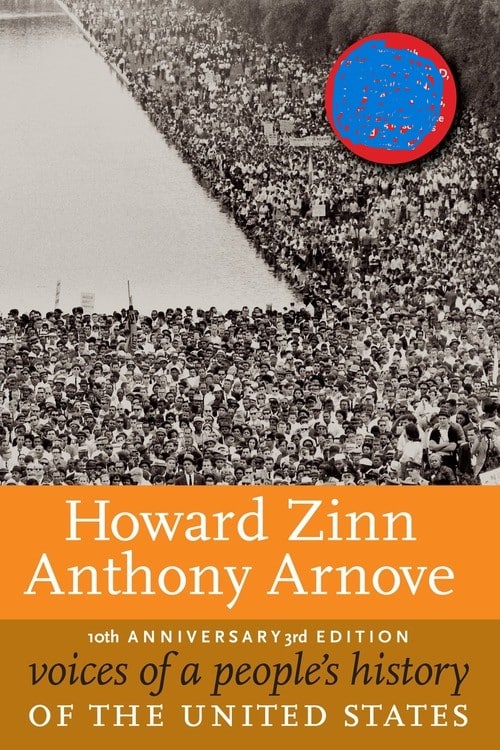
Voices of a People’s History of the United States, 10th Anniversary Edition
Book — Non-fiction. Edited by Howard Zinn and Anthony Arnove. 2014. 704 pages. Speeches, letters, poems, and songs for each chapter of A People’s History of the United States .
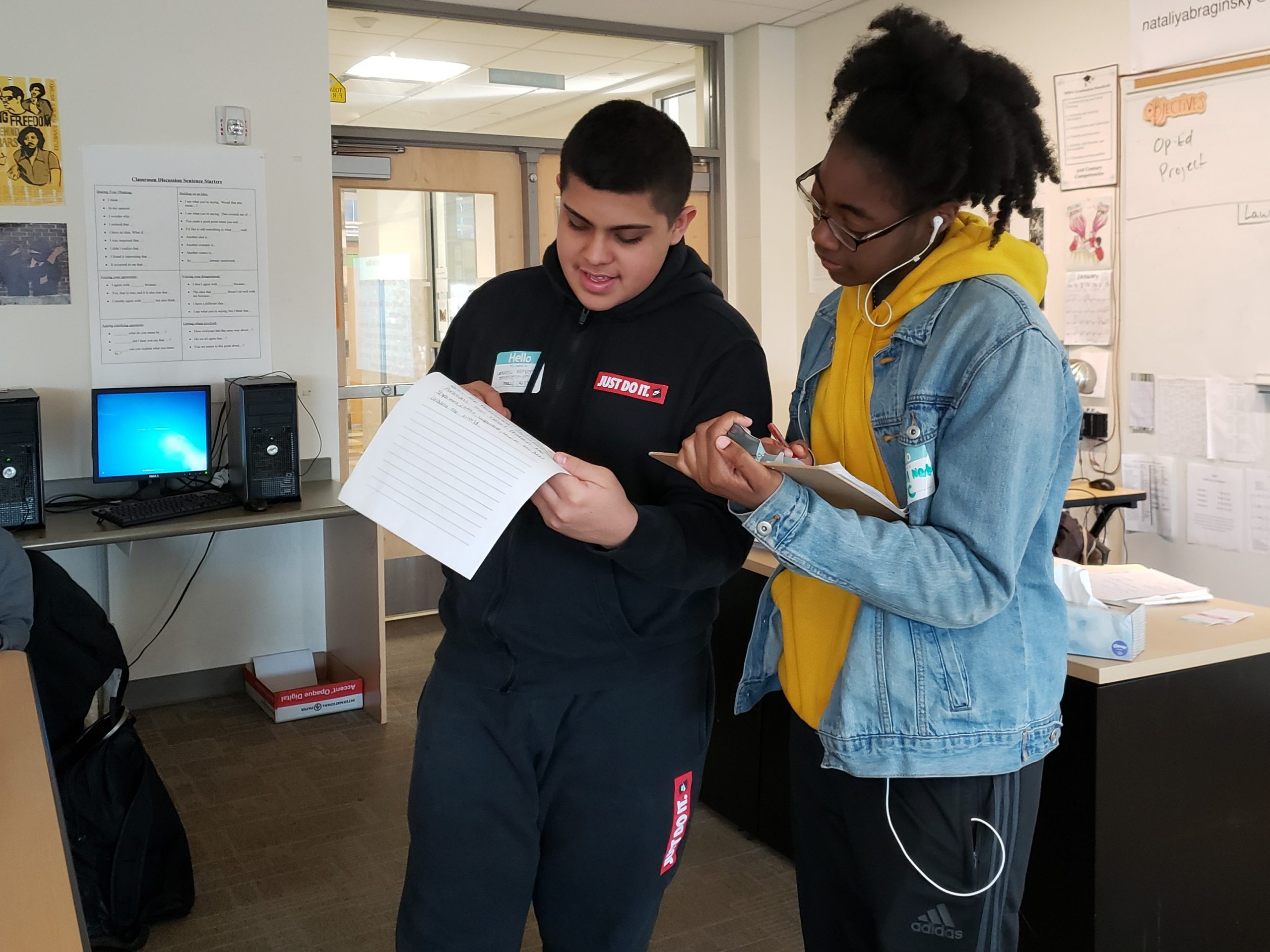
How to — and How Not to — Teach Role Plays
Considerations regarding the planning and use of role plays for teaching people’s history.
4 comments on “ Unsung Heroes: Encouraging Students to Appreciate Those Who Fought for Social Justice ”
When are you going to add in the story of Catholic institution building, anti-Catholic bias in the 19th and twentieth centuries, and add the names of Catholic women, especially nuns and sisters, who worked to overcome barriers erected by the majority culture during this time? None of this is in textbooks I have read over the course of my college education: from freshman through the doctoral levels.
Teachers, let’s make sure we use this plan and even expand on it when helping students choose a topic for their National History Day 2017 project. This year’s theme is “Taking a Stand in History”…its begging our students to research those who have stood for justice.
Thank you for adding truth to the study of our past… When humans hide the imperfections and demons among us, truth loses and the injustices and imperfections in our past keep their un-warranted power.
Thank you for you enlightening work.
Share a story, question, or resource from your classroom.
Your email address will not be published. Required fields are marked *
More Teaching Resources


Essay on Unsung Heroes of Freedom Struggle
The unsung heroes of the freedom struggle is the name given to all the great freedom fighters who had a major contribution in making India an independent nation but they have never got recognition for their brave deeds. The act of making India an independent nation was not a very simple task and it took a total of 90 years for the same. This would not have been possible without the effort of the unsung heroes of the nation. The heroic deeds and sacrifices made by all the known freedom fighters, great leaders and unrecognized heroes of the nation have never cared for their own pleasures and have given shinning future to the people of the nation.
Short and Long Essay on Unsung Heroes of Freedom Struggle in English
The topic unsung heroes of the freedom struggle is a very important topic for all school students and exam aspirants. In the same reference, I have provided a long elaborate essay on this topic. I hope that this might provide the students with an idea of writing an essay, paragraph, assignment, or project on this topic.
10 Lines Essay on Unsung Heroes of Freedom Struggle (100 – 150 Words)
1) Many heroes fought in the freedom struggle but we know only a few.
2) The country is unaware of the struggle and contribution of various heroes.
3) Unsung heroes are the heroes whose names are missed out from the limelight.
4) The known heroes of the freedom struggle are Mahatma Gandhi, Rani Laxmi Bai, Jawaharlal Nehru, etc.
5) The first name includes Madam Bhikaji Cama, who hoisted the Indian flag in Germany.
6) Peer Ali Khan was another revolutionary who sacrificed his life in the freedom struggle.
7) Matangini Hazra is among unsung heroes who took out several protests against Britishers.
8) Sardar Udham Singh, a lost revolutionary was hanged for assassinating a British official.
9) The name of the youngest revolutionary, Khudiram Bose is missing from the public focus.
10) All the unsung heroes should be respected for their bravery and contribution.
Long Essay: 2000 Words – Massive Contribution of Unsung Heroes in Freedom Struggle of Independence
Introduction
Every year the people of India celebrate Independence Day on 15th of August. It is because the nation got independence on this day in the year 1947 and it is a significant day in the history of India. The commemoration of this day is meant to pay homage to all the freedom fighters of the nation who fought bravely for making India free from the rule of Britishers. We all are aware of the fact that the independence that we are enjoying at present is because of the bravery of the freedom fighters of the nation. The list of freedom fighters only states about the freedom fighters whose name has been highlighted but there are many unsung heroes that have a major role in making India an independent nation. We will be discussing in detail about the unsung heroes of the nation in the essay provided below.
Who Are the Unsung Heroes Of The Freedom Struggle?
The country India was under the rule of Britishers for a period of more than 200 years. This led to rise of the freedom struggle movement in the nation that started in the year 1857 and lasted till 15th of August 1947. The freedom struggle for independence was very long i.e. 90 years and was a painful phase for all the Indians. This was a massive struggle and many people of the nation have been a part of this great freedom struggle. We all have mostly read and know about the famous freedom fighters like Mahatma Gandhi, Jawaharlal Nehru, Subhash Chandra Bose, Rani Lakshmibai, etc but there are many more names in the list of freedom fighters of the nation. These are the name of the freedom fighters that have been part of the freedom struggle of independence but there is no name or evidence of their bravery mentioned in the history of India.
These freedom fighters are stated as the unsung heroes of the freedom struggle. Since nobody in the country knows about their names or their contribution for the nation therefore they have been named as unsung heroes. The brave Indian revolutionaries like Bhagat Singh and Mangal Pandey have also been the part of the list of unsung heroes of the nation but their names have been highlighted because of the efforts of Indian cinema.
The Names Of Few Unsung Heroes Of The Freedom Struggle Of Independence
We have been celebrating our independence day from the last 75 years and this year in 2022 we will be celebrating our 76th independence day. Do you think that independence would have been possible only by the effort of a few highlighted leaders and freedom fighters? This independence is the result of the bravery and sacrifice of many great freedom fighters as well as the unsung heroes of the nation. Every year on Independence Day we celebrate the joy of our freedom as well as pay our regards to all the great freedom fighters who have sacrificed their lives to give us a free nation. Let’s make our 76th independence day more happening by knowing about some of the unsung heroes of the freedom struggle who had sacrificed their lives for making India a free nation but were never known to the people of the nation. In this way, we can also pay our tribute to all the unsung heroes of the nation for their great deeds and sacrifice.
- Madam Bhikaji Kama
Madam Bhikaji Kama was one of the important Indian revolutionaries. She had been born in a Parsi family in 1936 in Mumbai. She went for the cure of plague in London and met Shyamji Krishna Verma. She was greatly impressed by the good nationalist speeches delivered by him for the people of London Indian communities. She came to know and meet with Dadabhai Naoroji because of Shyamji Krishna Verma. She also worked as a secretary of Dadabhai Naoroji who was then serving as a president of the British committee of the Indian National Congress in London.
She was not allowed to enter India until she would sign a statement of not participating in the nationalist activities and she denied for the same. She further went to Paris and had established the Paris Indian Society along with S.R Rana and Munchershah Burjorji Godrej. She actively participated in the freedom struggle by writing literature in favour of the Indian struggle for independence. She had been writing this literature even when she was in exile. She hoisted the ‘Flag of Independence’ in Germany. This flag has been displayed at Martha and Kesari libraries at present.
- Peer Ali Khan
Peer Ali Khan is an important name in India’s freedom struggle for Independence. This revolutionary was born in the year 1812 in Muhammadpur Azamgarh district of Uttar Pradesh state of India. He played a major role in a rebellion with the motive of uprooting Britishers from the nation. He was involved in the profession of bookbinding and in this way; he helped the freedom fighters in providing them the coded messages, notes, important leaflets, etc. He also participated in the campaigns that were taken out against the Britishers. His activities were noticed by the Britishers and as a result, he along with his 33 followers was arrested on the 4th of July in 1857. He was brutally punished by the Britishers and hanged along with some of his followers in the front of public on 7th of July in 1857. In this way, he had sacrificed his life for the nation at the age of 45 years. A road near the Patna Airport in Bihar and Children Park in front of District magistrate residence has been named after the name of Peer Ali Khan in his honour by the state government in the year 2008.
- Sardar Udham Singh
Sardar Udham Singh was a freedom fighter having a major contribution in the freedom struggle for independence. He was actively participating as a member of Ghadar party and Hindustan socialist Republican Association (HSRA). Udham Singh greatly admired Bhagat Singh and thus started participating in nationalist activities. He was greatly moved by the incident that took place in the Jallianwala Bagh massacre in Amritsar in the year 1919 and decided of taking revenge for this painful incident. A British official named Michael O’Dwyer who was the lieutenant governor of Punjab at that time was responsible for happening of this painful incident. Udham Singh was accused of assassinating O’Dwyer on 13th of March in the year 1940 in Caxton Hall in London. Therefore, he was given the punishment of death and was hanged on 31st July 1940. He kept his name as ‘Ram Mohammad Singh Azad’ while he was in imprisonment and this emphasized the three major religions namely Hindu, Muslim, and Sikh.
- Tiruppur Kumaran
Tiruppur Kumaran was a freedom fighter and had contributed to the Indian Independence movement. He was born to Nachimuthu Mudaliyar and Karuppaayi in Erode district of Tamil Nadu on 4th October 1904. He was involved in participating in protests against Britishers from a very small age. He also established Desa Bandhu Youth Association and raised his voice against Britishers through the protests. He died at a very young age of 27 while protesting against Britishers on 11th of January in the year 1932. The reason for his death was the major injuries because of beating by police while he was protesting against the British government in Tiruppur. He was asked by the British police officials to put the Indian flag down because it was banned by the British. Tiruppur Kumaran was not ready to do the same at any cost and he kept holding the flag till his death. This gave him the title ‘Kodi Kaatha Kumaran’ which literally means ‘Kumaran who protected the flag’. A statue has been installed in Tiruppur by the state government to pay tribute to this great freedom fighter and a stamp has also been issued in his name by the India Post on the occasion of his 100th birth anniversary.
- Khudiram Bose
Khudiram Bose is regarded as a brave freedom fighter and the second youngest revolutionary in the Indian Independence movement. He was born to Trailokyanath Bose and Lakshmipriya Devi on 3rd December in the year 1889 in the West Bengal State of India. He started raising his voice and protesting against British rule from a very young age. He was accused of the assassination of two British women’s death in the carriage. Khudiram Bose along with his friend Prafulla Chaki went for throwing a bomb on the carriage of the British judge named Magistrate Douglas Kingsford but they were mistaken and they threw the bomb in the wrong carriage. Khudiram Bose was sentenced to death when he was only 18 years and 8months old. He was the first Indian revolutionary of Bengal to be executed by the Britishers. His friend Prafulla Chaki shot himself before his arrest by the Britishers.
- Matangini Hazra
Matangini Hazra was an Indian revolutionary who actively participated in the freedom struggle for independence. She kept protesting against the Britishers till her last breath. This brave freedom fighter was born in a small peasant family in Hogla village of West Bengal in the year 1869. She took a major interest in participating in the Indian independence movement. She took part in different protests taken out against the Britishers and was also imprisoned several times. She never lost her hope as a freedom fighter and rose every time with new energy. She became a member of the Indian National Congress and took part in all the protests and campaigns taken out against Britishers. She participated in the Quit India Movement taken out by Mahatma Gandhi and marched with about 6 thousand supporters towards the Tamluk police station. The motive of this peaceful protest in Medinipore district was to take the control of several government offices and police stations from the hand of Britishers. She was shot three times by the Britishers when she moved forward with a motive of taking over the Tamluk police station. She pleaded not to fire on the crowd and kept moving forward along with the wounds and was holding the national flag tightly in her hands. She was shot many times but never stepped backward and kept on saying ‘Vande Mataram’. She breathed her last on that place and held the national flag in her hands tightly till her death. In Kolkata, the first statue to be built after India got Independence was of Matangini Hazra. This was built to pay tribute to this great freedom fighter of the nation.
- Begum Hazrat Mahal
Begum Hazrat Mahal was an Indian revolutionary during the revolt of 1857 in the freedom struggle of independence. She was born in the year 1820 in the Faizabad or Awadh district of Uttar Pradesh state in India. Begum Hazrat Mahal was regarded as the second wife of Nawab Wajid Ali Shah. She had actively participated in the nationalist activities after Awadh was taken over by the Britishers and Nawab was sent to Calcutta in exile. She protested against the Britishers along with the Raja Jalal Singh and also made her son Birjis Qadr as the next Nawab of Awadh. Later after the entire Lucknow and Awadh came under the rule of Britishers she went to Nepal and spent the rest of her life there only. She died at that place only in the year 1879.
It can be stated that India had been the land of several brave freedom fighters. It is really sad that many of them had sacrificed their lives for the sake of the independence of the nation but we are unaware of their names. Every independence day we celebrate in the nation we remember the events that took place in our history and pay tribute to all our freedom fighters for their bravery and sacrifice for the nation. It is true that the name of many of the brave Indian revolutionaries is in darkness but we can honour them by saying them as ‘unsung heroes of the freedom struggle’. The independence of India is a great gift of the brave known and unknown freedom fighters to the people of the nation. We salute all the unsung heroes of the nation for their brave deeds and sacrifice for the nation.
FAQs: Frequently Asked Questions On Unsung Heroes Of Freedom Struggle
Ans. Aruna Asaf Ali was part of the Quit India Movement taken out in the year 1942.
Ans. The slogan ‘Do or Die’ was given by Mahatma Gandhi.
Ans. Raja Ram Mohan Roy is regarded as the ‘Father of Indian Renaissance’.
Ans. Surendra Nath Banerjee led the agitation against the partition of Bengal that happened in 1905.
Related Information:
Essay on Independence day
Essay on Mahatma Gandhi
Related Posts
Essay on digital india, cashless india essay, essay on child is father of the man, essay on causes, effects and prevention of corona virus, essay on dr. sarvepalli radhakrishnan, durga puja essay, essay on summer vacation, essay on my plans for summer vacation, essay on holiday.
भारत सरकार GOVERNMENT OF INDIA
संस्कृति मंत्रालय MINISTRY OF CULTURE
- Azadi Scientists
- Stories of Change
- Competitions
- Districtwise narratives of our splendid heritage
- Paying tribute to India’s freedom fighters
- Public Contribution Portal
- Revolutionary poetry banned during the British Raj
- Zara Yaad Karo Qurbani
- Melodic identity of our States
- Stories of India’s Freedom Struggle
- Unity Festival

Celebrating Unsung Heroes

During the 'Azadi ka Amrit Mahotsav', events, exhibitions (online and offline), publications, and develop museums keeping the unsung or unacknowledged heroes of the Indian freedom struggle will be planned. Many freedom fighters do not find place in the conventional freedom movement storyline. Moreso, those from the tribal or marginalized sections of society. One such example is Veer Gundandhur, who led the tribals of Bastar in the freedom struggle. Then there are Velu Nachiyar, Bhikaji Cama, and many more whose contributions are yet to see the light of the day. The ideals of human resolve, kindness and selflessness will be celebrated and promoted during the course of the events. With the element of inclusion in the conventional storyline, local history shall find place under the "Dekho Apna Desh". Every state and UT is planning events in accordance with this theme. Chief secretaries from every state and UT are planning two/three historical events of local importance. The idea of unsung heroes will be intricately linked to the Visit India Year 2022 wherein regional art, culture, heritage, wellness and yoga shall be promoted.
Explore More Themes
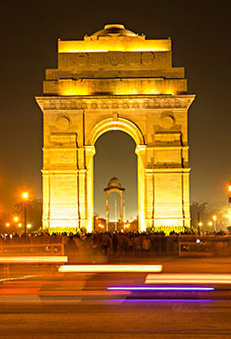
- Our Mission
A Note from George Lucas: Celebrating Unsung Heroes in Education
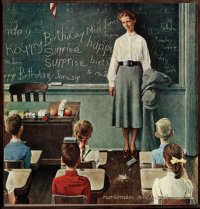
Today, on Teacher Appreciation Day, I want to send a word of thanks to a group of devoted individuals who, apart from my parents, have done the most to shape my life -- my teachers. From kindergarten to college, certain teachers engaged my curiosity and motivated me to learn. While I was not the best student, their efforts left a lasting impact.
For more than twenty years, my educational foundation has joined forces with teachers, parents, students, administrators, and business and community leaders to illuminate the most innovative learning strategies to be found in K-12 classrooms across the country. Along the way, we've met thousands of unsung heroes: people from different backgrounds, working long hours with diverse student populations, aiming to make learning the most engaging, relevant process it can be. These educators know that today's students need to leave school possessing important skills for success -- how to find information, critically assess its accuracy, be adaptive, collaborate with others, and creatively solve problems.
Through Edutopia, we identify these great educators and the learning strategies that are working in schools. We disseminate our findings on the Internet for easy access, anytime, anywhere. In the coming months, The George Lucas Educational Foundation will conduct more rigorous research on learning strategies that we have identified through Edutopia. We want to give you tools that will help you implement proven strategies such as Project-Based Learning (PBL) and Social and Emotional Learning (SEL).
So whether you're in a school that has implemented a full project-based curriculum, or you're just starting out integrating new technologies, what matters most is that you keep pushing for greatness and that you don't give up -- even when it seems like you're being underappreciated and overly stressed and frustrated beyond all belief. You have the most important job of anyone today. Now more than ever, our kids need you to advocate for their futures. All of us need this.
We know that many of you who are reading this have done amazing things. Please take a moment to tell us what works at your school or district. By doing so, you help to highlight the best of what's happening in education today.
- 75 years of Independence: A look at India's unsung heroes
75 years of Independence: A look at India's unsung heroes


Featured In India
The decision to recognise November 15 — the birth anniversary of Bhagwan Birsa Munda — as Janjatiya Gaurav Diwas will be marked with golden words in the pages of history. The nation is celebrating the Azadi ka Amrit Mahotsav on the occasion of 75 years of Independence and determining its commitments for the year 2047. This step is the most significant milestone towards recognising the contribution of the tribal fraternity. As part of the week-long celebration, various events and activities have been conducted to highlight the rightful role of the tribal community in the national development journey.
History has been unfair in recognising tribals’ role and potential in every sphere of national development. Across India, these communities challenged the British, whose actions to line their pockets by destroying abundant natural resources were directly affecting the economic and social framework of tribal communities. The fight against the British-imposed system by the Paharia, Chuar, Kol, Bhil, Ho, Munda, Santhal, Khond, Koya, Koli, Ramosi, Kuki, Khasi, Singpho — among other movements — was led by people of indomitable spirit, who encouraged the masses to revolt.

As part of Janjatiya Gaurav week, it is apt to recollect the tribal legacy of the 1913 Mangarh hill massacre. The incident is known as the “Jallianwala Bagh massacre of the Vagad region” and was led by Bhil social reformer and spiritual leader, Govind Guru. When the freedom struggle all over India was taking shape in various forms, the tribal region along the present-day Gujarat- Rajasthan border radiated the same zeal. Over 1,500 Bhils sacrificed their lives fighting against British forces.
- Voters are not mendicants with begging bowls, elected representatives not rulers
- Inheritance tax on buffaloes
- The armchair activism of #blackout2024
Govind Guru started working with the Bhil community during the great famine of 1899-1900, and saw the effects of oppressive British measures. He advocated systematically fighting social problems such as liquor consumption and inter-generational debt. He united the community, spread awareness about their identity, established schools, and addressed the spiritual hunger of the masses. He initiated the Bhagat Sampradaya (sect) in 1908 to socially and morally uplift the Bhil community. These measures didn’t sit well with the imperial regime. The state harassed the followers of Govind Guru. On November 17, 1913, on the hillock at Mangarh, a congregation was called by Govind Guru. British forces surrounded the gathering from three sides and fired indiscriminately. The sacrifice of the Bhils became a beacon of strength for others, inspiring them to achieve freedom.
There is much to learn from tribal communities. Since time immemorial, their love for nature has inspired the rest of society. Their integrity in protecting and preserving indigenous art, culture, environment and forests is worth appreciating at a time when the world is struggling to build a consensus around climate change. Tribal communities also have a better sex ratio (990) than the national average (940). There is relatively less dowry in tribal communities. A sense of togetherness ensures that the girl child is welcomed. The government has identified and felicitated the shining stars of the tribal community, including luminaries such as Tulasi Gowda ( Karnataka ), Rahibai Soma Popere ( Maharashtra ) and Lakshmikutty (Kerala); and Dutee Chand, Mary Kom , Bhaichung Bhutia, Deepika Kumari, Thonakal Gopi and Lalremsiami from the sports fraternity.

The founding fathers of the Constitution laid down special provisions in the Fifth and Sixth schedules for the upliftment of tribal society. The representation of these communities has been ensured at the parliamentary, assembly and panchayat levels. The Atal Bihari Vajpayee-led NDA government set up a separate Ministry of Tribal Affairs in October 1999 to expedite the pace of tribal welfare-related work. Since 2014, the Narendra Modi government has started to bring change in the lives of disadvantaged sections and they have become significant stakeholders in mainstream development programmes, adhering to the vision of “Sabka Saath, Sabka Vikas, Sabka Vishwas and Sabka Prayas”.

In addition, there has been a seven-fold increase in the minor forest produce covered under MSP , a 62-fold jump in the value of procurement of minor forest produce. Over Rs 1,000 crore worth of loans for tribal entrepreneurs have been sanctioned under the Stand Up India scheme.
As the first Janjatiya Gaurav week ends, we as citizens of India, must pay tribute to these unsung heroes. It is our duty to highlight the stories of tribal heroes and heroines from the freedom struggle and introduce them to the new generation. Let’s take this opportunity to pledge to preserve their distinguished art, culture and customs in the spirit of Ek Bharat Shreshtha Bharat.
This column first appeared in the print edition on November 24, 2021 under the title ‘No longer overlooked’. The writer is Union Minister of State for Parliamentary Affairs and Culture
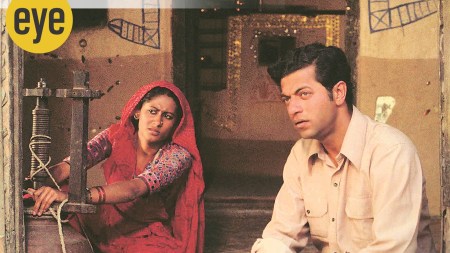
Shyam Benegal's Manthan: A crowdfunded film Subscriber Only

Express at Cannes: Yorgos Lanthimos is back with Kinds of
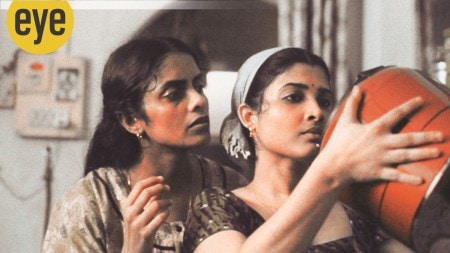
All We Imagine As Light: How to make it to Subscriber Only

Gogi Saroj Pal's humanism on display at Delhi Art Gallery Subscriber Only
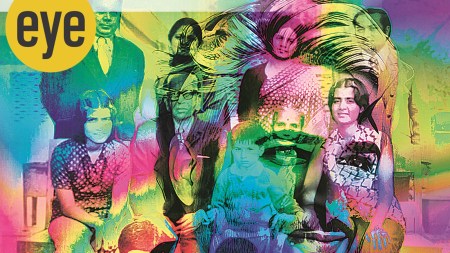
What money can't buy Subscriber Only

Ebrahim Alkazi's biography offers an intimate look into his life Subscriber Only

The Three Musketeers Part II Milady movie review
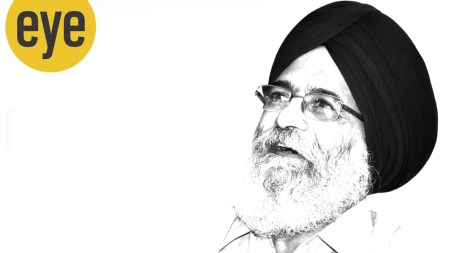
Remembering poet Surjit Patar, whose writing pierced one's conscience Subscriber Only

The many types of parents in the animal kingdom Subscriber Only
- india DO NOT USE
40 Years Ago
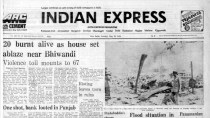
Pradeep Rawat, known for his negative roles in the 80s and 90s, recently shared his memories of shooting for Rakesh Roshan's Koyla. He revealed that Hrithik Roshan, who was an assistant director on the film, would bring the script to Johnny Lever. Rawat also talked about Bollywood's Baadshah Shah Rukh Khan's chain-smoking habit and his dedication to the film.

EXPRESS OPINION

Best of Express

More Explained

May 20: Latest News
- 01 Rescuers in Nepal retrieve the bodies of an American climber and her guide
- 02 Bud Anderson, last of world war II’s ‘triple ace’ pilots, dies at 102
- 03 Yellow warning issued as Mumbai set to vote amid hot, humid conditions
- 04 Real estate agent, wife found dead in their Kandivali house
- 05 Deputy Commissioner of Police suspended over Anjali murder case in Karnataka
- Elections 2024
- Political Pulse
- Entertainment
- Movie Review
- Newsletters
- Web Stories
Beyond the Founding Fathers: 12 Unsung Figures Who Helped Build America

E very year, Americans get the day off and set off fireworks to celebrate Independence Day, the day in 1776 when the Declaration of Independence was printed (though the Continental Congress voted on the resolution declaring independence from Britain two days earlier.) While Founding Fathers behind that document like John Adams , Ben Franklin, and Thomas Jefferson are household names, there were many men and women who played an important role in shaping America in its infancy who are not as well known, This is especially the case for women and minorities. Native Americans , furthermore, had their own functioning societies that predated the U.S. by centuries.
TIME asked historians who study the founding era and early American history to highlight people from this period who made significant contributions to America in their communities. From the brain behind the “We the People” clause in the U.S. Constitution, to a woman who risked her life holding loyalist soldiers prisoner during the Revolutionary War, what follows in an effort to broaden our understanding of the young nation during this period.
Mayken van Angola (early 1600s-late 1600s)
A founding mother of america’s black community.
One founding figure that I remember this Fourth of July is Mayken van Angola. Born in the early seventeenth century, Mayken was enslaved to the Dutch West India Company on the island of Manhattan for over three decades. She campaigned for and won her freedom in 1662, along with two other women, Susanna and Lucretia. But their freedom was constrained—they had to promise to continue to clean the house of Director General Petrus Stuyvesant, the leader of the Dutch colonies in North America, to maintain their freedom. Sadly, Susanna and Lucretia died shortly after gaining their freedom, leaving Mayken to clean the entire house on her own. Perhaps reeling from the loss, Mayken campaigned for freedom once again, arguing for relief from her forced labor, which was granted in April 1664. Mayken lived in freedom throughout the remaining months of Dutch rule and well into the period of English control that began in August 1664. Married to a free Black landholder named Domingo Angola, Mayken was part of a growing African and African-descended community in New York, and was a founding mother of the Black community in America. Her story is one of freedom from oppression and external control over her body, and has a certain extra salience this Independence Day.
— Nicole Maskiell , author of Bound by Bondage: Slavery and the Creation of a Northern Gentry, forthcoming
Gouverneur Morris (1752-1816)
The author of ‘we the people’.
The most important unknown founder is a peg-legged guy from New York named Gouverneur Morris. Everybody knows who wrote the Declaration of Independence. Nobody knows who wrote the Constitution. Gouverneur Morris single handedly took all the drafts and put them together in a week and gave the Constitution its shape. And he made the most important editorial change in American history. The draft that he was given began as follows: “We the People of New Hampshire, Massachusetts, Rhode Island” and listed states down the east coast. He changed it to read “We the People of the United States.” All of a sudden, the single issue that’s central to the whole constitutional convention—”Are we a nation or a confederation of states?”—is resolved in that one line.
— Joseph Ellis , author of The Cause: The American Revolution and its Discontents 1773-1783
Lemuel Haynes (1753-1833)
America’s first abolitionist writer.
In July 1776, Lemuel Haynes, a free Black man with a white mom and a Black dad, was a soldier in George Washington’s Continental Army. He had just finished writing an essay called “ Liberty Further Extended ”—one of the world’s first anti-slavery pamphlets. When he read the Declaration of Independence, he liked the phrase ”all men are created equal” so much that he used it to open his essay—thus becoming the first person to quote what are now the Declaration’s five most iconic words. Whites of the founding era who wrote about the Declaration emphasized its states’ rights passages. In those early days, Haynes and other anti-slavery activists like Benjamin Banneker were about the only ones who read the Declaration as promoting personal freedom. Those abolitionists—and in the 19th century, women’s rights’ campaigners—eventually convinced their fellow Americans to see our founding document the way all Americans do today: as a universal declaration of human rights.
— Woody Holton , author of Liberty Is Sweet: The Hidden History of the American Revolution
Esther de Berdt Reed (1746-1780)
A fundraiser for the revolution.
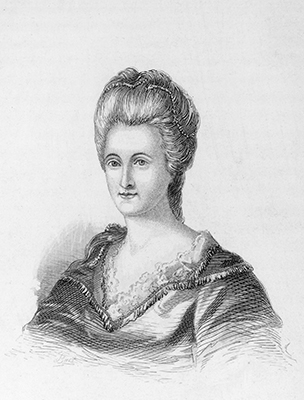
Born in England, Esther became a prominent American patriot. Following the most significant American defeat of the Revolutionary War—in which about 3,000 men surrendered to the British in the fall of Charleston, S.C. in May 1780—she wrote a tract titled “Sentiments of an American Woman,” which called for women to rally to the revolutionary cause. She compared their potential role to Biblical and ancient heroines who came to the aid of their countries. The pamphlet proposed a fundraising drive, which she then organized, headed in each colony by the wife of the governor, and nationwide by Martha Washington. Her idea was to solicit donations from other women to reward each American soldier with a small sum of hard money, not the inflated currency then circulating. Women went door to door in Philadelphia seeking contributions, raising what would be hundreds of thousands of dollars today; women did the same in Maryland and New Jersey as well.
When Esther wrote to Gen. George Washington to announce the plan to give each soldier a gift from patriotic women, Washington rejected the idea. He replied that he feared the men would spend such money unwisely, most likely on alcohol. Instead, he asked Esther and her colleagues to make shirts for the soldiers. Esther initially disagreed, daring to oppose Washington and to argue that soldiers’ clothing should be supplied by the government—but she finally had to give in. The money collected by the canvassers bought linen to make shirts distributed to soldiers, although it’s unclear whether the wealthy women who started the organization made the shirts themselves or hired seamstresses to do so. Esther Reed’s pamphlet was the first major public statement by an American woman about a political issue. She has however been forgotten, largely because she tragically died later in 1780 in the aftermath of childbirth. Her work was concluded under the leadership of her friend Sarah Franklin Bache, Benjamin’s daughter.
— Mary Beth Norton , author of Liberty’s Daughters: The Revolutionary Experience of American Women, 1750–1800
Nathanael Greene (1742-1786)
A nearly forgotten general.
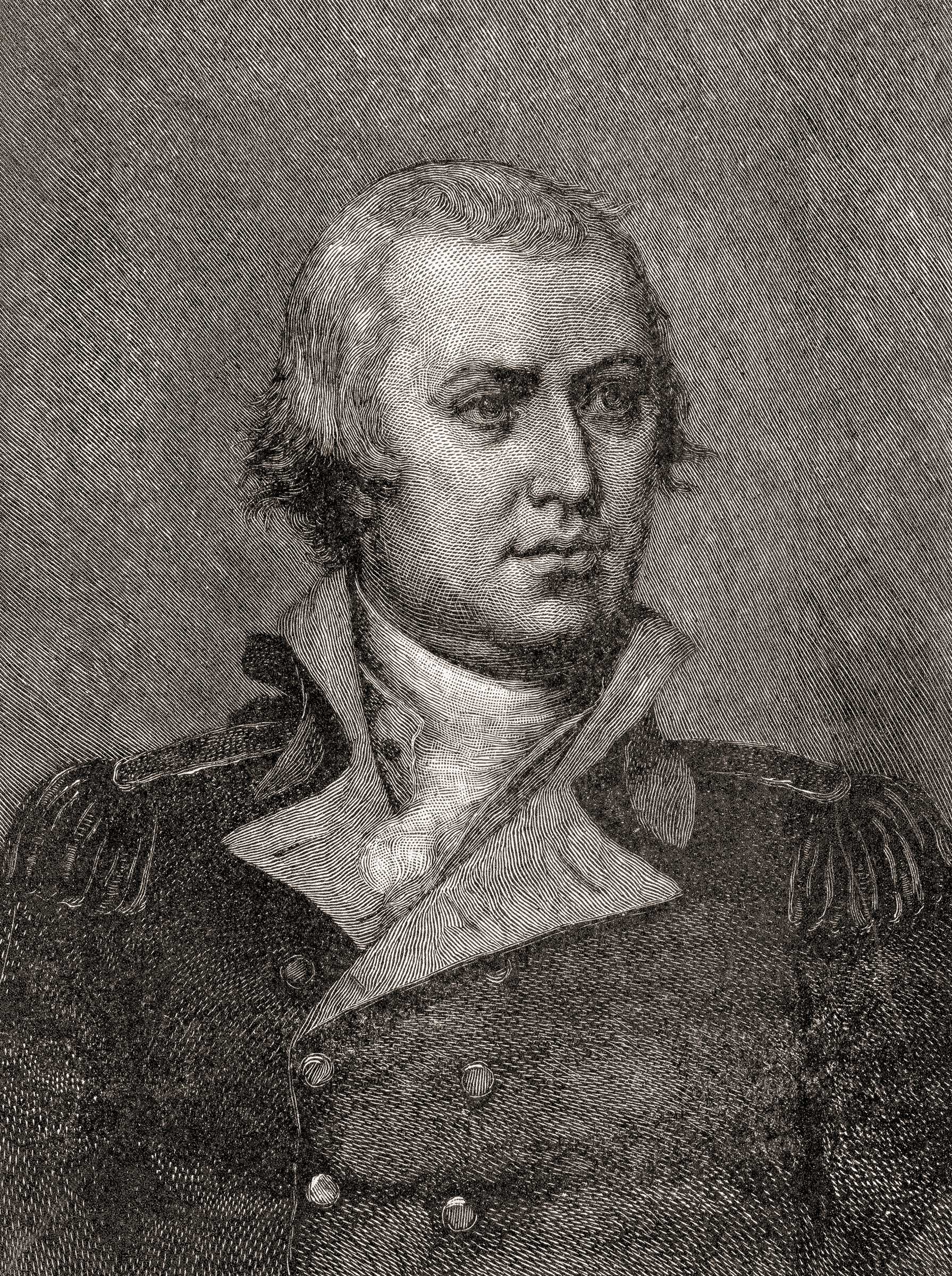
Born and raised a Quaker in Rhode Island, Greene was a military amateur. But he rose from the militia to become George Washington’s most dependable and loyal general. Greene ignored his religion’s calls for pacifism to join the American cause on ideological and moral grounds. His “confidence” didn’t “arise from our discipline and military knowledge, but from the justice of the cause and the virtue of America,” Greene himself wrote. Showing the same sense of morality throughout the war, Greene championed equal pay for Black soldiers, “humanity” for loyalists, and rules of war by which “cruelty was dishonorable.”
“Amateurs talk tactics, professionals study logistics,” says the old military maxim. Greene was able to think in terms of an entire campaign, not a single battle. Today, the U.S. military would call it operational art—the ability to link the strategic with the tactical. Greene did it before such a concept existed. He used traditional and guerilla fighting, picking his battles and strategically retreating throughout the Carolinas. Greene described his strategy to Washington as: “We fight, get beat and fight again.” Despite few individual victories, Greene was able to exhaust the British and win the Southern campaign. He excelled at the thankless task of supplying the Continental Army as Quartermaster General, even driving himself into financial ruin by personally assuming the debt to equip his troops.
So why don’t more Americans know about Nathanael Greene? Washington tends to overshadow all other generals, but Greene’s early death from heat stroke in 1786 may be the culprit. A Broadway cast sang “every other founding father gets to grow old” about Alexander Hamilton; Greene died even younger at age 43. Gone a year before the Constitutional Convention, he lacked the opportunity to cement his legacy in the new republic.
— Craig Bruce Smith , author of American Honor: The Creation of the Nation’s Ideals during the Revolutionary Era.
Thayendanegea (1743-1807)
A native american diplomat.
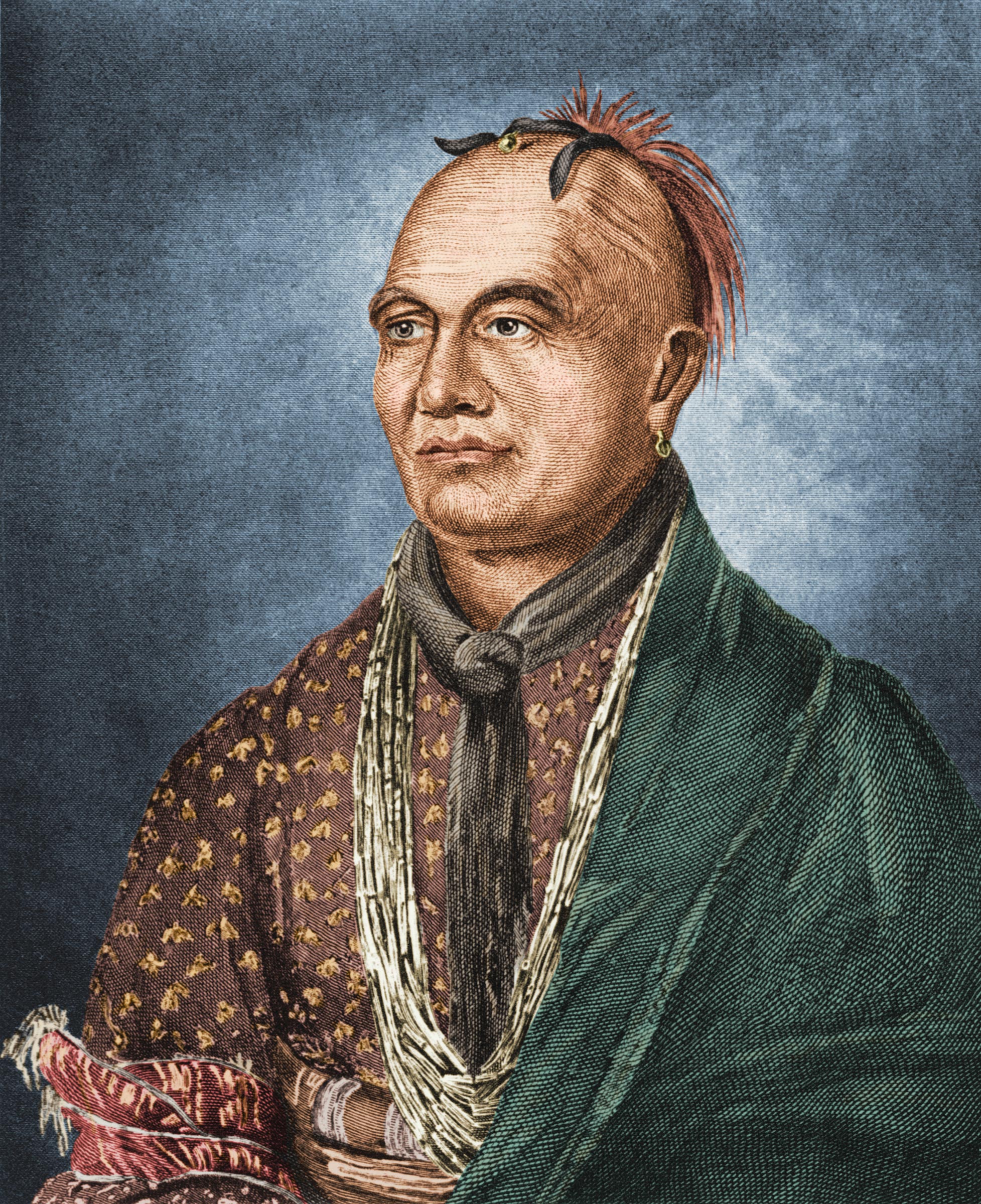
Thayendanegea, a Mohawk from the village of Canajoharie in the Mohawk River Valley (later called New York), rose to prominence as a diplomat, political leader, and warrior among the Haudenosaunee (People of the Longhouse), also known as the Iroquois or Six Nations Confederacy. In his youth Thayendanegea attended a boarding school in Connecticut run by the Congregational minister Eleazar Wheelock, where he became a fluent English speaker and took the name Joseph Brant after undergoing a Christian Baptism. This dual identity and bilingualism allowed Thayendanegea to achieve a position of great political importance in eastern North America during the era of the American Revolution, a time when the social world of Indigenous and colonial peoples overlapped.
While the Grand Council of the Iroquois decided to remain neutral during the war, Thayendanegea fought with the British. After the revolution Thayendanegea became an advocate for peace with the newly independent United States, and an advocate for Native unity. He linked peaceful co-existence with the U.S. to recognition of Native land claims, declaring Indigenous territory outside of the 13 states to be a “common pot” or “a dish with one spoon.” The land of North America, he argued, belonged to all Native peoples and should not be divided or sold off by individual Indian nations.
— Michael Witgen , author of An Infinity of Nations: How the Native New World Shaped Early North America
Eliza Harriot O’Connor (1749-1811)
An early campaigner for equal rights for women.
O’Connor was the first woman to give public lectures in the United States. Importantly, she gave them at the University of Pennsylvania in Philadelphia in the summer of 1787 when the delegates were gathering to draft the Constitution. Almost every day in the newspaper as the delegates worked on the Constitution, there was a notice that there was a woman giving lectures nearby. George Washington attended one of them, and because of his attendance, newspapers across the United States spread the word and it went viral. I argue that her legacy is the fact that the Constitution is gender neutral, permitting the interpretation that women could hold political office and participate as voters.
She also tried to establish a very ambitious female academy, which would be run by a majority of women. O’Connor represents the belief percolating at the time that women were equally capable of the same types of education as men and the same types of political participation. She’s a really important model of, in the framing generation, people pushing the boundaries of exclusion and imagining that the United States could be a place where people—regardless of sex or gender—can participate fully in public life.
— Mary Sarah Bilder , Female Genius: Eliza Harriot and George Washington at the Dawn of the Constitution
Benjamin Rush (1746-1813)
The enlightened doctor.
Rush is a second-tier revolutionary who is not as well-known as he ought to be. Although he was a member of the Continental Congress from Pennsylvania and a signer of the Declaration of Independence in 1776, he was not primarily a politician but a physician and scientist, indeed, the most celebrated physician and scientist in the early Republic. More than either Franklin or Jefferson, Rush personified the American Enlightenment. Since he came to believe that “the science of medicine was related to everything,” he considered everything within his intellectual domain. Believing he “was acting for the benefit of the whole world and of future ages,” he campaigned for every conceivable reform—for a national university, churches for Blacks, temperance, healthy diets, the emancipation of slaves, prison reform, free postage for newspapers, enlightened treatment of the insane, the education of women, animal rights—and the abolition of hunting weapons, dueling, and corporal and capital punishment. He was not so utopian, he said in 1786, as to think than man could become immortal, but he did believe that “it is possible to produce such a change in his moral character, as shall raise him to a resemblance of angels—nay, more, to the likeness of God himself.”
As a physician, he was a great bleeder, tending to bleed all his patients regardless of the nature of their illnesses. Unfortunately for his patients, however, he overestimated the amount of blood in the human body. He thought most people had twelve quarts of blood, double the six quarts in the average person. Since he often took from his patients as many as five quarts of blood in a day and a half, it is not surprising that so many of them died. The acerbic Philadelphia journalist William Cobbett termed Rush’s bleeding “one of those great discoveries which are made from time to time for the depopulation of the Earth.” But, one of Rush’s greatest achievements was bringing the two estranged former friends, John Adams and Thomas Jefferson, back together in their retirement years.
— Gordon S. Wood , author of Power and Liberty: Constitutionalism in the American Revolution
Hannah Griffitts (1727-1817)
Mobilizing ‘female patriots’.
By July of 1776, Hannah Griffitts had been thinking and writing about patriotism and liberty for more than a decade. A Quaker, a poet, and the head of her own household in Philadelphia, Griffitts was linked by family to some of the most ardent patriots (Secretary of Congress Charles Thomson) as well as famed moderates (John Dickinson) and many neutrals or loyalists.
Griffitts was part of a circle of women writers in revolutionary Philadelphia who had been exploring what women’s independence might mean. She had written lyrically about faith, nature, and grief, but when she turned to politics, and the American dispute with Great Britain, she was more direct. In 1768 when British taxes on goods bound for the colonies were making headlines, she wrote about how women could use the power of boycotts to make their political views known. She called on “female patriots” as the “daughters of liberty” to deny themselves and their families the taxed goods. “Rather than freedom we[‘ll] part with our tea,” she proclaimed. When the revolution came, she could not support violence, but she was ready with her weapon of choice: words and boycotts.
— Karin Wulf, author of Lineage: Genealogy and the Power of Connection in Early America, forthcoming
Nancy Hart (circa 1735-1830)
Outsmarted loyalist soldiers.
One day, between 1778 and 1780, Hart was at home with her daughter in her cabin in Georgia when five loyalist soldiers—that is, Americans who supported the British cause—showed up at her door, armed with weapons and bayonets. The soldiers said, “Feed us.” ’ She went out, and she brought her daughter with her, and she said to her daughter, “You go find American troops and tell them I’ve got five loyalists here in the house.” And then she cooked them this meal, and while she prepared the meal, she plied them with whatever alcohol she had. By the time they sat down, they were pretty drunk, and she made them put their rifles in the corner of the room. Then she picked up one of these guns, and she aimed it at these five men, and she held them prisoner for five hours until the Americans came and arrested them. Hart was really a character, and she went to the hanging of every one of these men and loudly whistled “Yankee Doodle” while they were being hanged.
There were unknown, ordinary women like this all across the former colonies. There were women who burned their crops on their farms to prevent the British army from having grain or the food that they needed while they marched. Some blew up their own houses—especially in the South, they stored ammunition and weapons for these guerrilla fighters, and when the British or the loyalists showed up at their houses, they exploded their own houses to make sure the British couldn’t get those weapons. I really want people to know about the critical roles women played in all aspects of the revolution.
— Carol Berkin , author of Revolutionary Mothers: Women in the Struggle for America’s Independence
James Forten (1766-1842)
A revolutionary war soldier and abolitionist.
James Forten, a free person of African descent, was one of the wealthiest men in Philadelphia. He fought as a privateer in the Revolutionary War as a teenager and was captured by a British ship. Born free in Philadelphia, after his release, he eventually returned to the city and became a businessman who made his fortune running a sailmaking loft and investing in real estate. He used the money that he earned, as well as the influence that he acquired, to push forward the causes that were closest to his heart: abolition and equal rights. He wrote op-eds for local newspapers and also helped to support the Liberator newspaper—published by William Lloyd Garrison. One of his most famous writings, ” Letters from a man of color ,” really eloquently talks about fighting in the Revolutionary War alongside white men and believing that they had all been fighting for the same thing— that all men were created equal. In a world where people often envision the American Revolution as one that was only about white people, it’s important to remember how many people of African descent were deeply involved in the founding of the nation and the shaping of its ideals. Making sure that we have a truer image of who was involved in all of that is really important.
— Adrienne Whaley, Director of Education and Community Engagement at the Museum of the American Revolution
Ona Judge: (1773/1774—1848)
Enslaved by the washingtons and never freed.
Ona Judge was an enslaved woman who belonged to Martha and George Washington. She came of age at Mount Vernon, serving Mrs. Washington, as her most prized, enslaved person, in part because she was an expert seamstress and sewer. When George Washington was elected unanimously as President of the United States, the Washingtons made the decision to take seven enslaved people with them to New York, the site of the nation’s first capital, and Ona Judge was one of those enslaved people. She was 15 or 16 years old when she was forced to leave her family behind to serve the first First Lady. She moved to New York and later to Philadelphia, where she continued to serve Mrs. Washington at the Washingtons’ executive home.
Ona Judge made the decision to escape, upon hearing that she would be given away as a wedding gift to Martha Washington’s granddaughter, who was known for having a volatile temper. On May 21, 1796, she walked out of the Washingtons’ home in Philadelphia while they were eating supper and never returned. She would remain a fugitive for nearly half a century, and George and Martha Washington would pursue Ona Judge until their last days on Earth. She died free in New Hampshire, though she was legally the property of Washington’s heirs.
By examining Ona’s story, we get an opportunity to reimagine the founding of the nation through the eyes of people who helped to build it, and who were prevented from experiencing the ideals central to the revolution. These ideals centered on freedom, democracy, equality, and never found their way to people like Ona Judge. People like George Washington and the other founders were flawed. They were brilliant. They were complex. This is a contradiction, and I think it helps to understand why, as a nation, we’re still wrestling with some of the central issues that our founders wrestled with in the latter part of the 18th century.
— Erica Armstrong Dunbar , author of Never Caught: The Washingtons’ Relentless Pursuit of Their Runaway Slave, Ona Judge
More Must-Reads from TIME
- The New Face of Doctor Who
- Putin’s Enemies Are Struggling to Unite
- Women Say They Were Pressured Into Long-Term Birth Control
- Scientists Are Finding Out Just How Toxic Your Stuff Is
- Boredom Makes Us Human
- John Mulaney Has What Late Night Needs
- The 100 Most Influential People of 2024
- Want Weekly Recs on What to Watch, Read, and More? Sign Up for Worth Your Time
Write to Olivia B. Waxman at [email protected]
February 7, 2014
Celebrating the Unsung Heros of Science and Black History
During my school years, I was excited about Black History Month. I was very fortunate to have a host of culturally-aware teachers who gleefully threaded lessons of Black Achievement through out all of my subjects.
This article was published in Scientific American’s former blog network and reflects the views of the author, not necessarily those of Scientific American
During my school years, I was excited about Black History Month. I was very fortunate to have a host of culturally-aware teachers who gleefully threaded lessons of Black Achievement through out all of my subjects. To cap the entire month out, we had a school-wide assembly that was a big celebration of all of the heros in Language Arts, Science, Invention, and Civil Rights we learned about in our classes.
Even now, I still search for ways to celebrate past and present achievers in Black History each February (as well as Women's History, Native American, and Asian-Pacific Islander for those corresponding months). When I taught high school, students had to complete reports on African-American Scientists. So many of them instinctively named George Washington Carver - an awesome man and no doubt a leader -but it was so hard to get them to see that African-Americans have continued to be apart of science and our contributions to science and society still occur today. With African-Americans comprising less than 10% of this nation's (USA) workforce, I can understand them not being able to readily identify many scientists and engineers. There are so many examples of Living Black History all around; and the achievements of these scientists and engineers are still worth celebrating.
The NAACP , the nation's oldest and largest civil rights organization, is calling for nominations in The Unsung Heroes Campaign . From the nomination announcement:
On supporting science journalism
If you're enjoying this article, consider supporting our award-winning journalism by subscribing . By purchasing a subscription you are helping to ensure the future of impactful stories about the discoveries and ideas shaping our world today.
We join the nation in honoring great African-Americans in history, but we also celebrate the everyday heroes who may not make the history books. The unsung heroes. The special people in our lives making our neighborhoods and communities a better place.
The Unsung Heroes campaign harkens the words spoken by civil rights activist Carter G. Woodson, the "Father of Black History" who founded the Black History Week back in 1926: "Those who have no record of what their forebears have accomplished lose the inspiration which comes from the teaching of biography and history." Woodson sought to bring the overlooked and under appreciated work of African-Americans to light, ensuring the contributions of our communities to the nation and the world received the recognition they deserved and that we know from whence we came.
Please join me and nominate an unsung hero and achiever in Science, Technology, Engineering, and Mathematics (STEM). By recognizing the individuals work to save lives, innovate, make new discoveries, improve and problem solve the most critical crises we experience today we help pave the way for future science achievers of tomorrow.
Nomination is very simple. Just share a short paragraph naming your Unsung Hero and explaining why you are nominating him/her. This is a recognition program to honor heros that are apart of our communities today, living and working along side us in our communities today. We want to celebrate these unsung heros and shine light on what they do. You can upload a photo and url of a video of your nominee, optional. But that's it. Here is the link to the nomination form.
By providing an email address. I agree to the Terms of Use and acknowledge that I have read the Privacy Policy .
Fostering unsung heroism in the Philippines
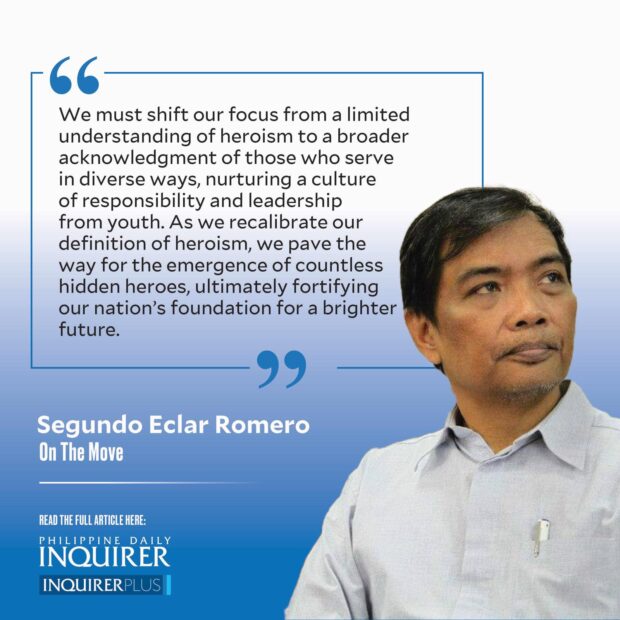
One thing I am certain of, our nation is yearning for heroes. As we cast our gaze backward, we find ourselves repeatedly drawn to historical epochs such as the Philippine Revolution, World War II, and the Edsa People Power Revolution for our heroic icons. When our national anthem is sung, the usual accompanying imagery — Filipino soldiers trudging the Death March, Lapulapu felling Magellan, and the valiant fighters of the Philippine Revolution — evokes a sense of dull admiration that highlights a yearning for fresh heroism.
Remarkably, our interpretation of the phrase “ang mamatay nang dahil sa iyo” (“to die in your cause”) in “Lupang Hinirang” has veered toward the literal, elevating sacrifice above all other forms of heroism. This perception, though grounded in the monumental sacrifices of figures like Jose Rizal, Jose Abad Santos, and Benigno S. Aquino Jr., has marginalized countless others who have made substantial contributions to our society without offering their lives. Among these unsung champions are teachers, students, extension workers, community leaders, farmers, entrepreneurs, innovators, researchers, scientists, journalists, government officials, and civil society leaders who, in the shadows, toil to enhance our collective well-being.
These unsung heroes act as the linchpin of community resilience and progress. Amid emergencies and disasters, they selflessly volunteer their time and energy. They assume leadership roles, cultivate cleaner and safer neighborhoods, and initiate tree-planting campaigns. They uphold the pillars of justice by bearing witness against crime and corruption, and they courageously confront those who perpetrate illegal and harmful actions in public spaces. Through their diligent work and daily lives, they personify responsibility and accountability.
Paradoxically, our lofty standards for heroism blind us to the heroes dwelling among us. This oversight stems from our lack of a structured process for hero cultivation. Other nations, such as China and Vietnam, cultivate heroes from an early age through programs like the Young Pioneers, fostering leadership potential, consciousness, and pride. This approach isn’t limited to socialism; it finds roots in the Boy Scouts movement initiated by Lord Robert Baden Powell. Regrettably, this noble concept has been subverted by politicians for personal gain, preventing its full realization in the Philippines.
Our nation requires a broader preparation for national service, one that embraces diverse avenues of contribution. The proposed resurrection of the Reserve Officers’ Training Course signals a positive step forward, but its scope should transcend military-centric training. The National Service Reserve Corps (NSRC) created by virtue of Republic Act No. 9163 known as the National Service Training Program or NSTP Act of 2001 is a better civic development model. Unfortunately, since the enactment of the NSTP law in 2001 until 2011, the NSRC was never organized and mobilized despite the issuance to that effect of a joint memorandum by the Department of National Defense, the Commission on Higher Education, and the Technical Education and Skills Development Authority.
Yet, the need for the NSRC keeps being affirmed. RA 10121 known as the Philippine Disaster Risk Reduction and Management Act of 2010 provides that the NSRC be accredited and mobilized for disaster risk reduction and management in the country.
It is time the NSRC is mobilized in earnest. It would provide the opportunity for youth civic engagement, guiding our young generation toward a profound understanding of duty and service and rekindling the spirit of patriotism.
Furthermore, initiatives like the Red Cross volunteers, the 4H Club, and the Young Farmers Challenge Club can captivate the imagination of our youth, offering platforms to acquire emergency skills and foster a sense of civic responsibility.
In my personal journey, I have had the privilege of encountering heroes whose contributions resonated deeply. Icons like Ninoy Aquino, Salvador P. Lopez, and Jesse Robredo have left an indelible mark on me. Yet, even beyond those I knew personally, I draw inspiration from figures like Wenceslao Vinzons, Maria Orosa, Juan Flavier, and Albert del Rosario, whose contributions have transformed the nation in profound but often uncelebrated ways.
In sum, the Filipino narrative of heroism must expand its envelope to encompass the quiet champions who stand resolutely behind the curtains of history. True heroism transcends self-interest and demands our attention. We must shift our focus from a limited understanding of heroism to a broader acknowledgment of those who serve in diverse ways, nurturing a culture of responsibility and leadership from youth. As we recalibrate our definition of heroism, we pave the way for the emergence of countless hidden heroes, ultimately fortifying our nation’s foundation for a brighter future.
[email protected]
Subscribe to our daily newsletter

Fearless views on the news
Disclaimer: Comments do not represent the views of INQUIRER.net. We reserve the right to exclude comments which are inconsistent with our editorial standards. FULL DISCLAIMER
© copyright 1997-2024 inquirer.net | all rights reserved.
We use cookies to ensure you get the best experience on our website. By continuing, you are agreeing to our use of cookies. To find out more, please click this link.

Unsung Heroes: Overlooked Figures in Black History
Discover the stories of lesser-known but impactful black individuals whose contributions to history and society deserve recognition during Black History Month.
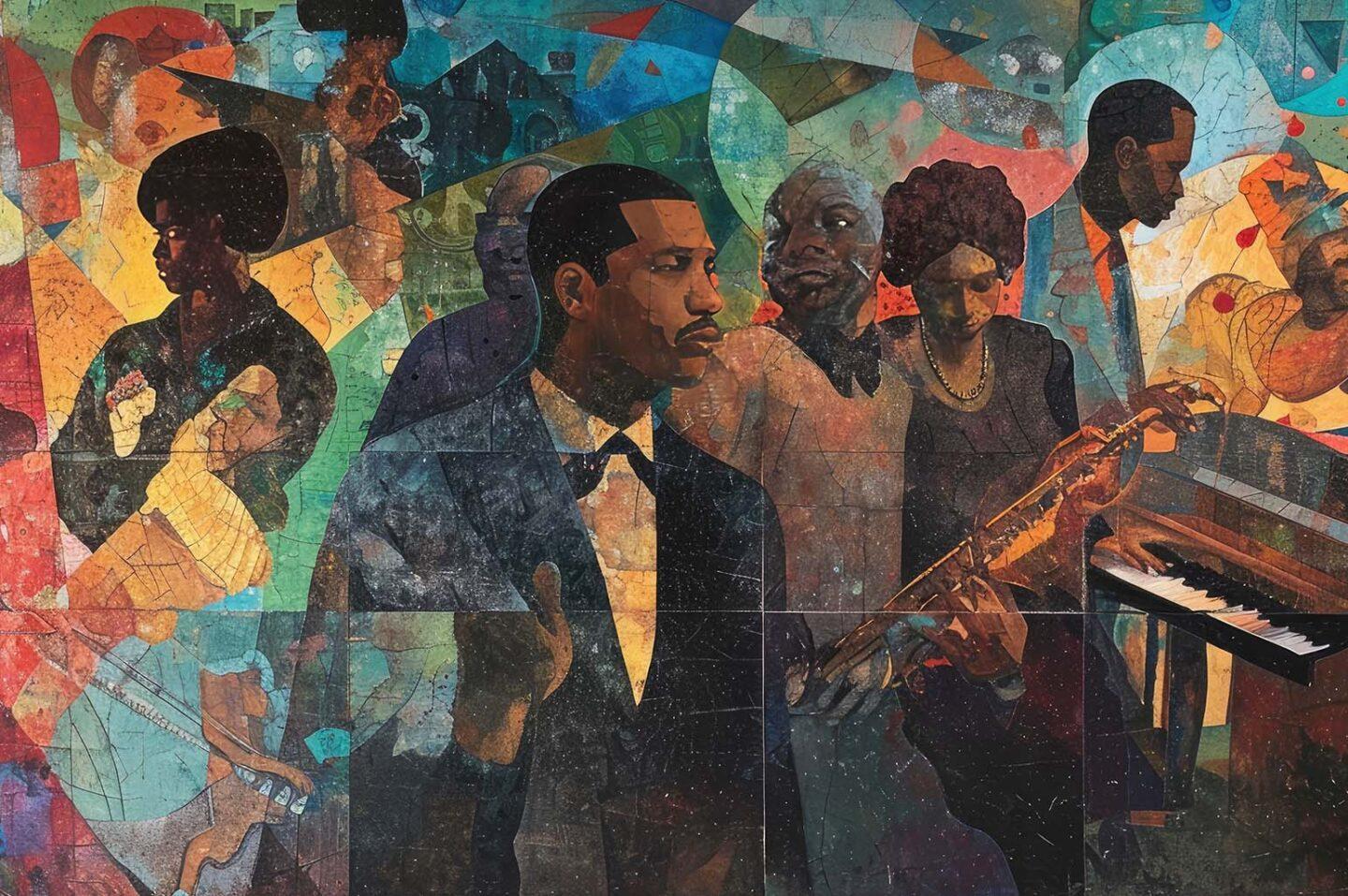
Black History Month is a time to celebrate and honor the achievements and contributions of African Americans throughout history. While well-known figures like Martin Luther King Jr., Rosa Parks, and Malcolm X are rightfully recognized for their significant impact, there are countless other individuals whose remarkable stories have been overlooked. In this article, we will delve into the lives of some of these unsung heroes—lesser-known but equally impactful black figures whose contributions to history and society deserve recognition during Black History Month. Let’s explore the stories of these remarkable individuals and shed light on their often-forgotten legacies.

1. Bessie Coleman: Pioneering Aviator
Bessie Coleman, born in 1892, was a trailblazer in aviation during a time when racial and gender discrimination was rampant. Growing up in segregated Texas, Coleman faced numerous challenges due to her African American and Native American heritage. Despite these obstacles, she was determined to become a pilot.
Denied admission to flight schools in the United States because of her race and gender, Coleman took matters into her own hands. She traveled to France and became the first African American woman to earn an international pilot’s license. Bessie Coleman’s courage and determination paved the way for future generations of black aviators and inspired positive change in the aviation industry.
2. Garrett Morgan: Inventor and Lifesaver
Garrett Morgan, born in 1877, was an inventor and entrepreneur who made significant contributions to public safety. His most well-known invention is the modern traffic signal, which he patented in 1923. Morgan’s traffic signal greatly improved road safety by organizing the flow of vehicles and pedestrians at intersections.
In addition to his work on traffic signals, Morgan also developed the first gas mask, a device that became crucial during World War I. His invention saved countless lives by providing protection against toxic gases. Despite facing racial discrimination, Morgan’s ingenuity and perseverance left an indelible mark on public safety, and his inventions continue to impact our daily lives.
3. Dr. Charles Drew: Pioneer of Blood Banking
Dr. Charles Drew, born in 1904, was a renowned physician, surgeon, and medical researcher who revolutionized the field of blood transfusion. His groundbreaking work laid the foundation for modern blood banking and transfusion medicine. During World War II, Drew played a crucial role in developing techniques for the long-term preservation of blood plasma, allowing it to be stored and transported for medical use.
Despite his significant contributions, Dr. Drew faced racial discrimination, especially during a time when segregation was prevalent. His legacy, however, continues to thrive, as his advancements in blood banking have saved countless lives and remain integral to medical practices around the world.
4. Shirley Chisholm: Political Trailblazer
Shirley Chisholm, born in 1924, made history as the first African American woman elected to the United States Congress. She represented New York’s 12th congressional district from 1969 to 1983 and was a fierce advocate for civil rights, gender equality, and social justice.
In 1972, Chisholm made a groundbreaking run for the Democratic Party’s presidential nomination, becoming the first black woman to seek a major party’s nomination for the presidency. Despite facing numerous challenges and prejudices, Chisholm’s historic campaigns paved the way for future generations of diverse political leaders and inspired a new era of representation in American politics.
5. Matthew Henson: Arctic Explorer
Matthew Henson, born in 1866, was an African American explorer who played a vital role in the first successful expedition to the North Pole. Despite facing racial discrimination, Henson joined Robert E. Peary on numerous Arctic expeditions, demonstrating incredible resilience and determination.
In 1909, Henson and Peary reached the North Pole, marking a historic achievement in exploration. However, Henson’s contributions were often overshadowed, and it wasn’t until later years that he received the recognition he deserved. Matthew Henson’s remarkable achievements as an Arctic explorer have solidified his place as a key figure in the history of polar exploration.
6. Claudette Colvin: Precursor to the Montgomery Bus Boycott
Long before Rosa Parks became a symbol of the Civil Rights Movement, Claudette Colvin, born in 1939, made history by refusing to give up her seat on a bus in Montgomery, Alabama. At the age of 15, Colvin was arrested for her act of civil disobedience, challenging racial segregation on public transportation.
Colvin’s bravery and defiance laid the groundwork for the Montgomery Bus Boycott, a pivotal event in the Civil Rights Movement. While Parks is often celebrated for her role, it’s essential to recognize Claudette Colvin’s early contribution to the fight against racial injustice and segregation.
7. Ida B. Wells: Fearless Journalist and Anti-Lynching Activist
Ida B. Wells, born in 1862, was a pioneering journalist, suffragist, and civil rights activist. She gained prominence for her investigative reporting on the horrors of lynching in the late 19th and early 20th centuries. Wells tirelessly documented and exposed the brutal realities of racial violence, challenging the prevailing narrative that justified these atrocities.
Wells co-owned and wrote for the Memphis Free Speech and Headlight newspaper, fearlessly using her platform to advocate for racial equality and justice. Her work laid the foundation for the anti-lynching movement and fueled the fight against racial violence. Ida B. Wells’ unwavering commitment to truth and justice makes her an essential figure in the ongoing struggle for civil rights.
8. Bayard Rustin: Architect of the March on Washington
Bayard Rustin, born in 1912, was a key strategist and organizer of the Civil Rights Movement, yet his contributions have often been overlooked due to his sexual orientation. Rustin played a pivotal role in the organization of the 1963 March on Washington for Jobs and Freedom, where Dr. Martin Luther King Jr. delivered his iconic “I Have a Dream” speech.
Despite facing discrimination for being an openly gay man, Rustin continued his advocacy for civil rights, nonviolence, and economic justice. His impact extended beyond the Civil Rights Movement, influencing subsequent movements for LGBTQ+ rights. Recognizing Bayard Rustin’s instrumental role in shaping the strategies of the Civil Rights Movement is essential to understanding the collaborative efforts that drove this transformative period in American history.
9. Mary Seacole: Nurse and War Heroine
Mary Seacole, born in 1805, was a Jamaican-Scottish nurse who defied societal norms and racism to provide medical care during the Crimean War. Despite her remarkable contributions, Seacole’s story was often overshadowed by that of her contemporary, Florence Nightingale.
Seacole set up the “British Hotel” near the battlefront, offering care to wounded soldiers. Her herbal remedies and compassionate nursing greatly contributed to the well-being of those she served. Mary Seacole’s courage and determination broke down barriers in the medical field and paved the way for future generations of black healthcare professionals.
10. Robert Church Sr.: Entrepreneur and Philanthropist
Robert Church Sr., born in 1839, was a prominent entrepreneur and philanthropist during the late 19th and early 20th centuries. Despite facing immense racial prejudice, Church became one of the wealthiest African American men in the South through savvy investments in real estate, saloons, and theaters.
Church used his wealth to support black-owned businesses, schools, and charities, contributing significantly to the economic and cultural development of Memphis, Tennessee. His legacy extends beyond his financial success, serving as a testament to the resilience and economic empowerment of black communities in the face of adversity.
Conclusion: Celebrating Diversity in Black History
These ten unsung heroes represent a mere fraction of the countless black individuals whose stories have been overlooked in traditional historical narratives. As we celebrate Black History Month, it is essential to recognize and appreciate the diversity of experiences, achievements, and contributions that have shaped our world.
By shedding light on these often forgotten figures, we enrich our understanding of black history and amplify the voices of those who have played pivotal roles in the ongoing struggle for equality and justice. In commemorating these unsung heroes, we honor their legacies and inspire a more inclusive and accurate portrayal of history for future generations.
Black History Month is not only a time to reflect on the past but also an opportunity to embrace the present and shape the future. Through education, awareness, and celebration, we can ensure that the stories of these remarkable individuals remain integral to the collective consciousness, fostering a more inclusive and equitable society for generations to come.
You may also enjoy:
Celebrating a black christmas & kwanzaa with books for …, don’t kill my black history vibe ✊🏾- …, shop black-owned this christmas with this amazing list, easy ways to teach kids about diversity ~ diversebooks4….

Importance of Teacher’s Day: The heroes that show the way
By ekta saxena ekta saxena has extensive experience in writing, having worked in many top media houses. she likes to write consistently on women issues, art and culture, mental health, and environment. along with her 7-year-old, she has authored ‘greens and chips forever’ and her second children’s book is ready for release. ekta loves to spend time with her daughter star gazing the night sky or looking out for chirping birds on the trees around..
05 September 2023
From the moment she walked into my class, I was in awe of her. The way she neatly draped her saree, her soft spoken and smiling demeanour, the way she broke down tough concepts into simpler ideas. Asha Mam had struck a special bond and place in my heart. Her importance in my life is difficult to erase, even after decades of being apart. On Teacher’s Day, I wish to send a note of gratitude Asha Mam’s way.
She instilled in me a confidence to adapt to new or foreign ideas. Her words still resonate and everything about her has remained crystal clear as if it was yesterday. Her memories, the knowledge she imparted and that motherly affection have made a place in my heart permanently. All those years back, she had given me a direction which I pursued and turned into my passion as well as my profession.
There is a great day set to celebrate wonderful educators like Asha Mam. September 5th is dedicated to our teachers, a day that commemorates the birth anniversary of the first President of India, Bharat Ratna Dr Sarvepalli Radhakrishnan, who was born on the same day in 1888. Interestingly, World Teachers’ Day is held on October 5th every year to celebrate teachers all around the globe.
As we grow up, we keep climbing the ladder of learning but each teacher, since the beginning of our formal education, plays a significant role in shaping us. In fact, it is correct to state that after one’s family, teachers play the most pivotal role in shaping us. While each comes with her own methodologies, one thing is common – they impart knowledge with love and affection.
Celebrating the unsung heroes
“If you have to put someone on a pedestal, put teachers. They are society’s heroes, ” these decorated words by the American author Guy Kawasaki echoes the sentiments behind the spirit of Teacher’s Day. Indeed, each of us remembers the teacher or teachers who left an indelible mark on us. They could be our school teachers, college or university professors or even our mentors during various professional stints.
“Education is the most powerful weapon which you can use to change the world,” stated the iconic leader Nelson Mandela. It is understood then that teachers are the facilitators of education that makes this world a better place.
The ‘hard working’ teachers
Teachers of any standard deal with a ton of challenges. They lead, mentor and educate a team which is truly diverse and has immense but locked potential. To unlock this potential, teachers give their ‘heart and soul’.
Standing on their feet through most part of the day, they begin their day early and spend a very hectic day well beyond teaching hours. They multitask – teaching the subject, taking care of each student and their work while instilling life lessons and values along the way. They work for the most vulnerable and demanding audience, that is the children.
Teachers instil discipline in us
We imbibe values from life’s first teachers, that is our parents . And these values decide our goals and the course of our life. Simultaneously, teachers play an equally important role in reinforcing those values.
They take us on a structured path to do things which is called discipline. Hardly anyone forgets the strict teachers that checked our trimmed nails and polished shoes. The one who scolded us for reaching late to class and even wrote a note in our diary if misbehaviour was observed. Well, we did not like her then, but years later, we cannot be more grateful to her for introducing us to grooming or the value of time. After all, in life, good time management is one of the greatest skills that help us in navigating each day with maximum productivity.
Unconditional love and care
“Your heart is slightly larger than the average human heart, but that’s because you’re a teacher,” these wonderful words from the New York-based cartoonist Aaron Bacall beautifully describe the love and affection of teachers towards their students.
Indeed, teachers feel extreme joy when their students understand what they are trying to teach and reciprocate. A student excelling or coming back to them after scaling great heights amounts to the greatest jubilation and contentment for teachers.
Synonyms of patience
Albert Einstein once famously said, “It is the supreme art of the teacher to awaken joy in creative expression and knowledge.” Really, one often wonders how teachers do it. With unlimited dedication of course. Teachers are laced with a special skill called patience which works brilliantly when polishing young skills and helping kids grasp new concepts. Teachers, without discrimination, try to channelize students’ energies into the right direction.
Like true heroes, they find innovative and suitable ways to metamorphose the kids into responsible, skilled, knowledgeable and disciplined grown-ups. The future of our society and globe is truly in the hands of these heroes, our teachers.
When is Teacher’s Day celebrated?
September 5th is dedicated to teachers in our country. The day commemorates the birth anniversary of the first President of India, Bharat Ratna Dr Sarvepalli Radhakrishnan, who was born on the same day in 1888.
Why is September 5th celebrated as Teacher’s Day?
September 5th commemorates the birth anniversary of the first President of India, Bharat Ratna Dr Sarvepalli Radhakrishnan, who was born on the same day in 1888.
When is World Teacher’s day celebrated?
World Teachers’ Day is held on October 5th each year to celebrate teachers all around the globe.
Comments Cancel Reply
Login to post a comment.
You might also like
More from happiness.

Good morning, rise and shine: 14 inspirational quotes to start your days right

Happier, better human beings: 7 ways to make peace your way of life

Putting family first: Heal and thrive with these 7 benefits of family therapy

Happy Mother’s Day: 2 billion moms on Earth and they all have this in common

6 reasons why Rabindranath Tagore will stay in our hearts and minds forever

Laugh out loud: Did you know laughter activates the super important vagus nerve?
- Conversations
- Travel diaries
- Guest contributors
- Relationships
- Life lessons
- Privacy Overview
- Strictly Necessary Cookies
- 3rd Party Cookies
- Additional Cookies
- Cookie Policy
This website uses cookies so that we can provide you with the best user experience possible. Cookie information is stored in your browser and performs functions such as recognising you when you return to our website and helping our team to understand which sections of the website you find most interesting and useful.
If you disable this cookie, we will not be able to save your preferences. This means that every time you visit this website you will need to enable or disable cookies again.
_ga Google Analytic This cookie is the centerpiece among all cookies because it is the one used for visitor tracking
_fbp Facebook pixel the pixel automatically saves a unique identifier to an _fbp cookie for the website domain if one does not already exist.
_gid Google Analytics Google Analytics cookies to track users as they
navigate the website and help improve the
website's usability.
fr Facebook pixel It contains Encrypted Facebook ID and Browser ID and the purpose is for Advertisement
fbm_220848925179805 Facebook pixel cookie used by Facebook applications (needed for logging in by FB)
NID Google ads The NID cookie contains a unique ID Google uses to remember your preferences and other information, such as your preferred language
xs Facebook pixel
This cookie contains multiple pieces of information, separated by colon
DSID Google ads This cookie is set to note your specific user identity. It contains a hashed/encrypted unique ID.
__gads Google ads Used by Google DoubleClick for Publishers to advertise on the site
c_user Facebook Cookies Analysis It provides information to Facebook to associate functionality of Social Plugin. Send information to Facebook regardless if you are a member or you have logged on the social network. For more information read the paragraph "Facebook (Social Plugin)" about Cookies Third Part
datr Facebook Cookies Analysis It provides information to Facebook to associate functionality of Social Plugin. Send information to Facebook regardless if you are a member or you have logged on the social network. For more information read the paragraph "Facebook (Social Plugin)" about Cookies Third Party.
sb Facebook Cookies Analysis These cookies are used by Facebook to support social sharing and the integration of Facebook services.
IDE doubleclick This domain is owned by Doubleclick (Google). The main business activity is: Doubleclick is Googles real time bidding advertising exchange
Please enable Strictly Necessary Cookies first so that we can save your preferences!
The Website uses temporary cookies, which are files that Your web browser puts on Your system when You visit a website, to store certain information that is not sensitive personal information. The information collected through these cookies is used by Us for the technical administration of the Website, research and development, and to improve the quality of Our Services (which is explained in greater detail below).
We may use third party cookies to track visitor behaviour and to improve the quality of Our Services. However, such cookies will not store any kind of personal information, nor will such information be disclosed to any third party.
We use cookies to:
- (i) recognize You when You visit our Website/platform;
- (ii) make Your interactions with Our Services/Website/platform faster and more secure;
- (iii) enable the functionality of Our Services and providing you with features, insights and customized content in conjunction with Our plugins. We also use these technologies to remember information about Your browser and Your preferences;
- (iv) customize Your experience on Our Services;
- (v)show relevant advertising to You more effectively; and
- (vi) help Us learn more about how well Our Services/Website and plugins perform in different locations.
These cookies are intended to be automatically cleared or deleted when the User quits the browser application. You are encouraged to use the "clear cookies" functionality of Your browser to ensure such clearing/deletion, since it is impossible for Us to guarantee, predict or provide for the behaviour of Your system.
The information We collect with cookies is not sold, rented, or shared with any third parties
Your wellbeing is a few clicks away.
Subscribe to your weekly dose of positivity, wellness, and motivation and get a free printable Soulveda Gratitude journal
News Lounge
Celebrating the unsung heroes: a tribute to teachers.

In every classroom, teachers stand as pillars of knowledge, igniting sparks of curiosity, and nurturing young minds to bloom into the leaders of tomorrow. They are the architects of dreams, instilling hope, resilience, and a thirst for knowledge in the hearts of their students. Beyond textbooks and syllabi, they impart wisdom that transcends the boundaries of academia, shaping character, and instilling values that last a lifetime.
Yet, amidst their noble endeavors, teachers often find themselves on the sidelines, their sacrifices and dedication overshadowed by the clamor of other professions. It’s time to change this narrative. It’s time to recognize the immeasurable impact of teachers on our lives, our communities, and our collective future.
To all the teachers out there, we want to say: You are seen. You are valued. You are appreciated. In a world where recognition is often scarce, we want to express our deepest gratitude to the educators who dedicate their lives to nurturing the minds of tomorrow. Your passion, resilience, and unwavering commitment inspire us all. You are the unsung heroes of our society, and your impact reverberates far beyond the walls of the classroom.

To the teachers of Eswatini and beyond, know that your work does not go unnoticed. You are the driving force behind every success story, the beacon of hope in times of uncertainty, and the guardians of knowledge in an ever-changing world.
So here’s to you, the champions of education. May your passion continue to ignite flames of inspiration, and may your impact echo through generations to come. Thank you for everything you do.
Related Articles

European Championship

How England ended their penalty curse – and the unsung hero who spent 18 months planning it
From the Euro 1996 semi-finals to the start of the 2018 World Cup, the penalty record of the England men’s national team was famously messy. Five matches went to penalties, five were lost.
Penalties had become a weight around England ’s neck. Their nemesis.
Then, at the World Cup in Russia, they ended that terrible run, beating Colombia on penalties to reach the quarter-finals.
In this exclusive extract from Geir Jordet’s new book, Pressure: Lessons from the Psychology of the Penalty Shootout, we learn about an unsung hero who worked for 18 months to help make it possible…
- Euro 2024 news and features
- Euro 2024 fixtures and schedule
- Declan Rice: My game in my words
The England 2018 story
In the round of 16 at the 2018 World Cup, England faced Colombia. The game ended 1-1 after extra time and went to penalties. Most England fans had a strong idea about how this was likely to end.
Since 1996, they had featured in five critical shootouts and lost them all. Moreover, my analyses had revealed that England players adopted more avoidance-oriented coping strategies in those shootout situations than any other players in Europe.
Advertisement
Chris Markham watched the Colombia game with colleagues in the in-house bar at St George’s Park, the Football Association’s headquarters. When Eric Dier converted the penalty that sent England into the quarter-finals and ended a 22-year era of consecutive shootout nightmares, everybody was, understandably, elated. About 30 minutes later, Markham’s phone pinged. It was a text message from Gareth Southgate, the England manager, thanking Markham and his team for everything they had done, without which the win would not have been possible.
Later, there would be a number of people who received and/or took credit for this penalty shootout success. In addition to the players and the coach, some people pointed to the FA’s technical director, some to the performance director, others to the psychologist. But Chris Markham’s name never seemed to come up. Why then did Southgate text Markham? Who is Markham anyway, and what did he do?
Allow me to tell the full story of what happened behind the scenes leading up to that penalty shootout win, and of how England regained control of something that had been eluding them for decades.
Chris Markham is currently the sporting director at Bolton Wanderers, but from January 2017 until February 2021, he was the game insights lead analyst at the FA. This new department, the brainchild of Rhys Long, head of analysis at the time, was tasked with finding and developing the types of match analytics insights that could be important for the England national teams’ performances, insights that those working directly with the teams did not have the time to pursue.
However, although Markham came to the FA from a job as head of performance analysis at Huddersfield Town FC, he was not an ordinary match analyst. His education was in sport psychology, completing his master’s degree in 2009.
“The first thing from the FA that landed on my desk,” Markham told me, “was: ‘How do we win a penalty shootout at a major tournament?’.” From January 2017 until the World Cup in Russia 18 months later, Markham led a team of four analysts, and eventually a data scientist, all working with one goal: to help England overcome the dreaded penalties.
I was introduced to Markham in January 2018 and met him for the first time in April that same year. He wanted to pick my brain about everything to do with penalties, and also show me what he and his team had done so far, and how they had used my research. What he showed me then, and what I later learned about the project, blew me away. I can safely say that no other team in the history of football has ever prepared as thoroughly and diligently for penalties as England did before the 2018 World Cup.
When I later sat down with Markham while writing this book, he shared a lot more detail about what they did leading up to that World Cup. The contrast with previous England management regimes was unmistakable. Markham: “I found quotes from each of the last five England managers before Gareth (Southgate), not including Sam (Allardyce), that said either the penalty shootout was a lottery, penalties are all down to luck, or that you can’t practise that kind of pressure.”

Over time, the “lottery” narrative had built a fundamental belief that penalties cannot be controlled or trained for, creating a pervasive feeling of helplessness. Markham was very aware of those consequences: “From a psychological perspective, speaking about a lottery takes ownership away from the players. And that was the thing for me to give them back. To take control of not just the kick itself but the whole process. Initially, it was about the perceived control. How can we increase the level of perceived control for the players and the staff and everybody?”
With that objective in sight, different steps were taken. Here are some of the key ones:
A presentation for Southgate: ‘Gaze masks and goggles’
At first, the team had six months to prepare one presentation for the manager, to convince him they could have an impact.
“Luckily for us, Gareth and his staff were extremely open-minded and respectful of good-quality work. But they don’t suffer fools gladly, so we knew it had to be at a really high standard.”
However, Markham was very aware that they were presenting a level of detail that Southgate and his staff had probably never seen before. “Talking about run-up steps, angle, pace, you know… everything from breathing techniques, optimal areas of aiming, goalkeepers, looking at gaze masks and goggles. And that was just on the technical bit. And then player selection, gambler’s fallacy, action biases and the centre of the goal being under-used… all these things could have easily blown them away, so I remember I went into Gareth’s office, and we basically printed out and cut into bits of paper all the different topics and Gareth then prioritised, literally on the floor and table, which ones he thought were important and which ones he thought were less of a priority.”
Dosage
Southgate’s leadership and communication were key. Markham and his team had discovered all this fascinating information about penalty kicks, and were inclined to give as much as possible of it to the players, but Southgate kept everything in perspective.
“Gareth understood there was a huge amount of information here and some of it was really important. However, if you make too much of a deal of this to the players it will have the reverse effect and instead of decreasing the pressure, it will increase the pressure. It will be paralysis by analysis. Gareth was really good, being able to get the right level of detail, the timing of detail, how it was put across to them and just make them aware of these things.”

Breaking down the shootout into distinct functional units
In the beginning, they read scientific papers to understand not just the penalty kicks, but also the syntax of the entire penalty shootout.
The phases we broke the shootout into were:
Phase 1: The break after extra time
Phase 2: The centre circle
Phase 3: The walk
Phase 4: At the penalty spot
“And that was when it started to come to life — the different areas that we need to be really good at. It is not just the kick, it is not just the psychology, there is a process that we can actually make that will take the pressure away from the players ultimately.”
Process
Southgate notoriously speaks about focusing on the process, not the outcome. The same went for penalties. Markham: “We then spoke about a process we can follow and be better at. The main reason for that was our idea that the main thing we can do here is give the players back the sense that they are in control of this, that it is a skill that they can improve. If we could give the players process and ownership, they could then believe that this was something they could control.”
Analyses of own players
Markham and his team conducted elaborate and rigorous analyses of their players’ penalty kicks.
“One thing that we added was a pressure rating. Why would we look at a penalty in pre-season when John Stones takes two steps and puts it in the top corner as the same as a penalty in the FA Cup final? You have to differentiate between them. We also looked at England’s penalty shootout experience. How many players were on the field in penalty shootout situations? And who took versus didn’t take. We found some interesting things on some of the bigger attacking players who had clearly been avoiding taking them in the shootouts. So that gave us insight.”

Meeting the players
Markham and his team presented a lot of these ideas to the players in a penalty workshop held in March 2018, a few months before the World Cup. “That was when we introduced the idea that the penalty shootout can be broken down into different areas and aspects. And we spoke about each of those in detail.”
A part of this first meeting was to show a video with a lot of details about run-ups, routines, referee behaviours, team behaviours, etc. They did this to “basically say, there’s way more to this than you think”.
This was also the first time the players got to express their views. “Certain players with experience didn’t want to take (a penalty); certain players without experience did (want to take a penalty) and vice versa.”
In the meetings with the players, they attempted to change the mentality around penalties, demonstrating to them, among other things, that England would be better prepared than anyone else.
“Framing was the main bit. All this work was ultimately going into building the perception that we have control over this. It is not something like a lottery; we can be better prepared than the other team because they won’t be thinking about it in this much detail.”
Meetings with referees
In the preparation phase, Markham also held meetings with referees to discuss the opportunities and constraints of the penalty shootout rules and regulations.
“It was all around the logistics of what-if scenarios. We discussed what we could get away with and at what point they would give you a yellow card. Around distraction, how much is the goalie going to get away with? Is he going to get away with scuffing the spot? Is he going to get away with pushing the bar?”

These discussions included trying to understand and incorporate the psychology of the referees themselves. “Look, most referees are probably not going to want to be the centre of attention at this point. So we deduced from that: you’re probably going to get away with more than you think.”
Notes on the goalkeeper’s bottle
This was not new, but they had elaborate discussions around the information about opponent penalty takers that would appear on the goalkeeper’s water bottle, which included transferring knowledge from other sports: “We looked at quarterback sleeves for the goalie and all these sorts of things.”

The reaction to the whistle
They knew our studies on reaction time and performance well but created an elegant communicative spin around it.
“We were really surprised with how quick, overall, players were and how short a time they took. As soon as the whistle went, they started running. I remember telling the players: ‘The whistle is not your cue; it is the referee’s cue. So, you can begin the run-up whenever you like. Your routine doesn’t start on the whistle; it starts when you want it to start’.”
Goalkeeper handoff
One of the distinct innovations that Markham and England brought to penalty shootouts was that their goalkeeper always would seek out the ball after having been in action at the goal line, to hand it over to the next teammate penalty taker. Interestingly, the idea for this came from having considered ways that the goalkeeper could engage in distraction of the opposition’s penalty takers .
“Obviously, one of the things we measured in our analysis was distraction. So, we tried to categorise distraction from the goalie from low, to medium, to high. We sub-coded all those goalie distractions: waving, jumping, shouting, pointing, messing with the bar… as part of this, the goalkeeper’s job was to go get the ball if he could. So, after we took a penalty, he would have to try and get it and after they took a penalty, he would have to try and get it. We wanted to mess about with them and not allow their goalie to mess about with us.”

Tailored training
The players and team practised penalties, but to a carefully measured degree, which was tailored to the player in question. “Players with little to no experience, such as Kieran Trippier, were treated differently to those with vast experience, such as Harry Kane.
“The dosage was really important and, again, Gareth and Steve Holland were excellent at managing this. Especially since you can’t have too many opposed kicks because of the goalkeeper, it starts getting unrealistic. Because the goalkeeper knows where the takers are going to go. So, you just end up messing about and it becomes more play than training.”
They did their best to simulate the full penalty shootout.
“We did a proper penalty shootout with referees, a huddle, a walk, a centre circle, messing with distractions — all of that. So, a proper dress rehearsal before they left for Russia. I’m sure they would have done another when they were in Russia.”
Also in Russia, the analysis team collected and coded each penalty taken and faced in training to “monitor performance and the development of routines, which ultimately played a part in deciding the order of penalty kickers in a shootout”.

The rise of the decoy penalty taker
Roles in the break after extra time
Another innovation they introduced was structuring the roles and communication for the team gathering after extra time and ahead of them walking into the centre circle.
The inspiration for this idea came from another sport.
“We spoke to Team GB Hockey about the penalty shootout process as a whole, designating roles and responsibilities for all staff and players, even those not involved in the shootout. Roles were communicated clearly during specific team meetings and practice during training sessions.”
Part of this was to divide the area around the team into different zones.
“We wanted to create clear boundaries that staff and players could or couldn’t cross. You had touchlines, you had the dugout and the technical area. They created a drinking station, a massage station, and players couldn’t go on to the field, or certain staff members were told: ‘You are not needed on the field at this time, because we need you in the technical area’.”
One can see this plan in action in that eventual shootout against Colombia. The atmosphere in the English camp appeared composed, focused and professional. The goalkeeper only spoke to a few select people, and was approached by only one staff member at a time. The contrast with the Colombia team was visible. At one point, David Ospina, the Colombian goalie, found himself being addressed by five staff members or team-mates at once.

Personal impressions
This project was obviously a big experience for Markham, both in the short and the long term.
“When the shootout happened, I’ve never been so nervous. I felt sick.”
Colombia’s Radamel Falcao started it all with a rocket straight down the middle. Goal.
Kane came next. Routine as usual, composed and controlled. Goal.

The next three penalties also went in, including the one from Marcus Rashford, with his pause after the whistle being under one second.
Colombia’s manager, Jose Pekerman, hid his face in his hands for most of the shootout, while Southgate looked as cool and composed as his waistcoat.
Then Jordan Henderson for England. Goalkeeper-independent shot to his right. The goalkeeper went early. Save. A long walk back to the centre circle.
However, the next two Colombians, Mateus Uribe and Carlos Bacca, also missed, while Trippier scored to leave it all up to Eric Dier to send England through.
He did. Goal. England had won their first penalty shootout since 1996.

For Markham and his team, one would have expected the party afterwards to go on all night. But in professional football, there is always the next game.
“I stayed up to like 9am that morning because we had to prepare the information on (next opponents) Sweden. So, I still don’t think I’ve celebrated it now.”
Markham remains proud of what they did, though.
“It will still probably go down as the thing I’m most proud of in my career, no matter what I achieve as a sporting director, because of the sheer scale of it. I still don’t understand it now. We were so locked in a bubble at St George’s Park. The good thing was that the brilliant team we had, that had done all the hard work together over the previous 18 months, were all there to celebrate our achievement together. That was the special bit.”
- Pressure: Lessons from the psychology of the penalty shootout is published by New River Books on May 30th. RRP £25
(Top photo: Alex Morton/Getty Images)
Get all-access to exclusive stories.
Subscribe to The Athletic for in-depth coverage of your favorite players, teams, leagues and clubs. Try a week on us.

Unsung Heroes of Society
In our society, there exists a class of people whose contributions often go unrecognized. They are none other than our everyday workers. Rarely do we take the time to celebrate their invaluable services. It is imperative that we honor them by hosting feasts or making grand announcements in their honor. Yet, too often, they are simply labeled as laborers without being afforded any of the perks or privileges they truly deserve.
Their daily wages typically range from 400 to 1000, depending on their occupation, amounting to a monthly income of more than 30,000, which is scarcely enough to cover household expenses. From food and healthcare to electricity and gas bills, the daily expenditures are often overwhelming. It is on this occasion that we truly come to appreciate the toil of these laborers. Who are they exactly? They could be daily wage workers, field laborers, cultivators, masons constructing buildings, or contract workers in various industries.
These workers endure significant hardships in their workplaces. Regrettably, they are not accorded the respect that every human being deserves, regardless of their occupation. This includes individuals such as garbage collectors, drainage cleaners, and street sweepers. Despite the critical nature of their work, they are often treated as outsiders in our communities. They labor tirelessly to maintain cleanliness, undertaking tasks that others shy away from. It is incumbent upon all of us to uphold cleanliness and order in our surroundings. What troubles me deeply is that those who perform essential cleaning duties, whether within households or in drainage systems, are not remunerated adequately for their efforts.
In addition to paying homage to laborers on this day, we must not overlook those individuals in uniform who diligently serve at security checkpoints in banks, hospitals, hotels, and other establishments. These uniformed personnel are often employed at meager wages to safeguard others, often at the risk of their own lives. Their monthly stipends are disproportionately low given the invaluable service they provide for their families and communities.
This segment of society is frequently marginalized, comprising individuals who work tirelessly for minimal compensation. They include indispensable workers such as clinic assistants, bus conductors, restaurant servers, household caretakers, private gardeners, and security guards who ensure round-the-clock safety. Many others remain undervalued and underpaid for their contributions. These individuals devote their lives to hard work, yet their efforts are inadequately recognized. On this Labor Day, it is imperative that we acknowledge the services of these low-income individuals who work with sincerity and selflessness, whether they are government employees or not. Their contributions transcend monetary compensation.
Even highly respected professions, such as teaching and law enforcement, are marked by low salaries. Teachers, despite their esteemed status, often receive meager pay at educational institutions. Police constables fulfill their duties tirelessly, disregarding their health and rest. Similarly, nursing staff in hospitals provide meticulous care to maintain patient health. Meanwhile, other low-income individuals work tirelessly to support their families.
Across the globe, laborers are recognized for their indispensable contributions to society's well-being. They deserve to be rewarded with monetary bonuses and accolades in acknowledgment of their significant contributions to the nation. Their invaluable services are fundamental to upholding the integrity, safety, and prosperity of nations. On this day, we express our gratitude for these individuals, recognizing that our society would be incomplete without them. They are the unsung heroes and invaluable assets of the nation, alongside scientists, educators, and doctors. Though they may not wear capes, their contributions surpass that of traditional heroes. Laborers are the true heroes, and we salute them.
We must remember that these hardworking individuals form the backbone of society. Their dedication and perseverance sustain our communities and propel our progress. It is imperative that we honor their contributions not only with words but also with fair wages, safe working conditions, and genuine respect.

IMAGES
COMMENTS
Essay On Unsung Heroes Of Freedom Struggle In English. Slogan: " Let's salute the unsung heroes who give us beautiful today.". "Freedom fighters gave us their today for our golden tomorrow.". The freedom of a country depends on its citizens. Every country has a few brave hearts who willingly give up their lives for their countrymen.
Find samples of essays written for MY HERO about the Best of Humanity: Celebrating Positive Contributions by Unsung Heroes. MENU. JOIN/LOGIN. ... Find below some sample stories celebrating unsung heroes working to effect positive change in their homes, community, or in the world.
By celebrating these unsung heroes and cultivating a culture of kindness, we can create a world where acts of compassion are valued, and the true essence of humanity shines through. So, let us ...
The Section on Unsung Heroes is an attempt to recall and remember forgotten heroes of our freedom struggle, many of whom might be renowned yet unknown to the new generation. The aim of recreating and bringing forth stories, which lay as faded memories of the past, shall serve as a medium of inspiration and encouragement for the coming ...
Unsung heroes of freedom struggle essay and paragraph. India is celebrating Azadi Ka Amrit Mahotsav to commemorate its 75 years of progressive independent. It's long drawn struggle to free India from the foreign rule has been a saga of valour. Many people sacrifice their lives for freedom of India.
From the opening of the "Unsung Heroes" essay by Howard Zinn A high school student recently confronted me: "I read in your book A People's History of the United States about the massacres of Indians, the long history of racism, the persistence of poverty in the richest country in the world, the senseless wars.
10 Lines Essay on Unsung Heroes of Freedom Struggle (100 - 150 Words) 1) Many heroes fought in the freedom struggle but we know only a few. 2) The country is unaware of the struggle and contribution of various heroes. 3) Unsung heroes are the heroes whose names are missed out from the limelight. 4) The known heroes of the freedom struggle are ...
REVIEW ESSAY UNSUNG HEROES AND HEROINES: THE ROLE OF PEOPLE AND ORGANIZATIONS IN SOUTH AFRICA'S LIBERATION STRUGGLE Ben Turok. Nothing But the Truth: Behind the ANCs Struggle Politics. Johan nesburg & Cape Town: Jonathan Ball Publishers, 2003. 314 pp. Photographs. Index. R147.00. Paper. Anne Marie du Preez Bezdrob. Winnie Mandela: A Life.
Celebrating Unsung Heroes. During the 'Azadi ka Amrit Mahotsav', events, exhibitions (online and offline), publications, and develop museums keeping the unsung or unacknowledged heroes of the Indian freedom struggle will be planned. Many freedom fighters do not find place in the conventional freedom movement storyline. Moreso, those from the ...
celebrate, to grieve, t o love. ... Georgia Gilmore, and JoAnn Robinson) remain a category of invisible, unsung heroes and leaders. Utilizing archival data and a subsample of personal interviews ...
George Lucas, founder and chairman of The George Lucas Educational Foundation, owns the preliminary pencil sketch of Norman Rockwell's "Happy Birthday Miss Jones". Today, on Teacher Appreciation Day, I want to send a word of thanks to a group of devoted individuals who, apart from my parents, have done the most to shape my life -- my teachers.
Unsung heroes. A V Kuttimalu Amma was a freedom fighter and prominent social worker who hailed from Kerala. She was an active member of the Mahila Sangh in Calicut. (Photo credit: Govt archive) 4/ ...
It is our duty to highlight the stories of tribal heroes and heroines from the freedom struggle and introduce them to the new generation. Let's take this opportunity to pledge to preserve their distinguished art, culture and customs in the spirit of Ek Bharat Shreshtha Bharat. This column first appeared in the print edition on November 24 ...
July 1, 2022 4:19 PM EDT. E very year, Americans get the day off and set off fireworks to celebrate Independence Day, the day in 1776 when the Declaration of Independence was printed (though the ...
The Unsung Heroes campaign harkens the words spoken by civil rights activist Carter G. Woodson, the "Father of Black History" who founded the Black History Week back in 1926: "Those who have no ...
While some groundbreaking heroes are well-known, there are many unsung heroes worth celebrating—particularly Black women. Here, we rounded up just some of the African-American women whose tireless efforts changed everything, and who never got the credit they deserve. Jane Bolin. Jane Bolin became the nation's first Black woman judge in 1939.
Fostering unsung heroism in the Philippines. One thing I am certain of, our nation is yearning for heroes. As we cast our gaze backward, we find ourselves repeatedly drawn to historical epochs such as the Philippine Revolution, World War II, and the Edsa People Power Revolution for our heroic icons. When our national anthem is sung, the usual ...
Black History Month is a time to celebrate and honor the achievements and contributions of African Americans throughout history. While well-known figures like Martin Luther King Jr., Rosa Parks, and Malcolm X are rightfully recognized for their significant impact, there are countless other individuals whose remarkable stories have been overlooked.
Here are ten to get you thinking! This week's Stories of Resilience post has been written in collaboration with the Atlantic Council's Unsung Heroes Initiative. 2020 has been a really tough year, for so many reasons. The scourge of COVID-19 has claimed hundreds of thousands of lives, and caused massive economic disruption that's brought ...
1003 Words5 Pages. The unsung hero does not wake and feel like they will do good that day. They do not know that they are heros, instead they believe that they are just a part of the community. But what they don't know is how important they are to the society. They change multiple lives a day rather its just making someone day or saving their ...
Celebrating the unsung heroes "If you have to put someone on a pedestal, put teachers. They are society's heroes, " these decorated words by the American author Guy Kawasaki echoes the sentiments behind the spirit of Teacher's Day. Indeed, each of us remembers the teacher or teachers who left an indelible mark on us.
In conclusion, Teacher Appreciation Week is a time to honor the unsung heroes of education, the teachers who work tirelessly to ensure that our children receive the knowledge, skills, and values they need to succeed in life. As we celebrate this special week, let us take the time to recognize the contributions that teachers make to our society, and to show our appreciation for all that they do.
In the bustling corridors of education, amidst the chalk dust and the rustle of papers, there exists a silent force that shapes the future with every word uttered, every lesson taught, and every life touched. These unsung heroes are none other than our revered teachers, the guiding lights in the labyrinth of learning.
In the beginning, they read scientific papers to understand not just the penalty kicks, but also the syntax of the entire penalty shootout. The phases we broke the shootout into were: Phase 1: The ...
They are the unsung heroes and invaluable assets of the nation, alongside scientists, educators, and doctors. Though they may not wear capes, their contributions surpass that of traditional heroes.